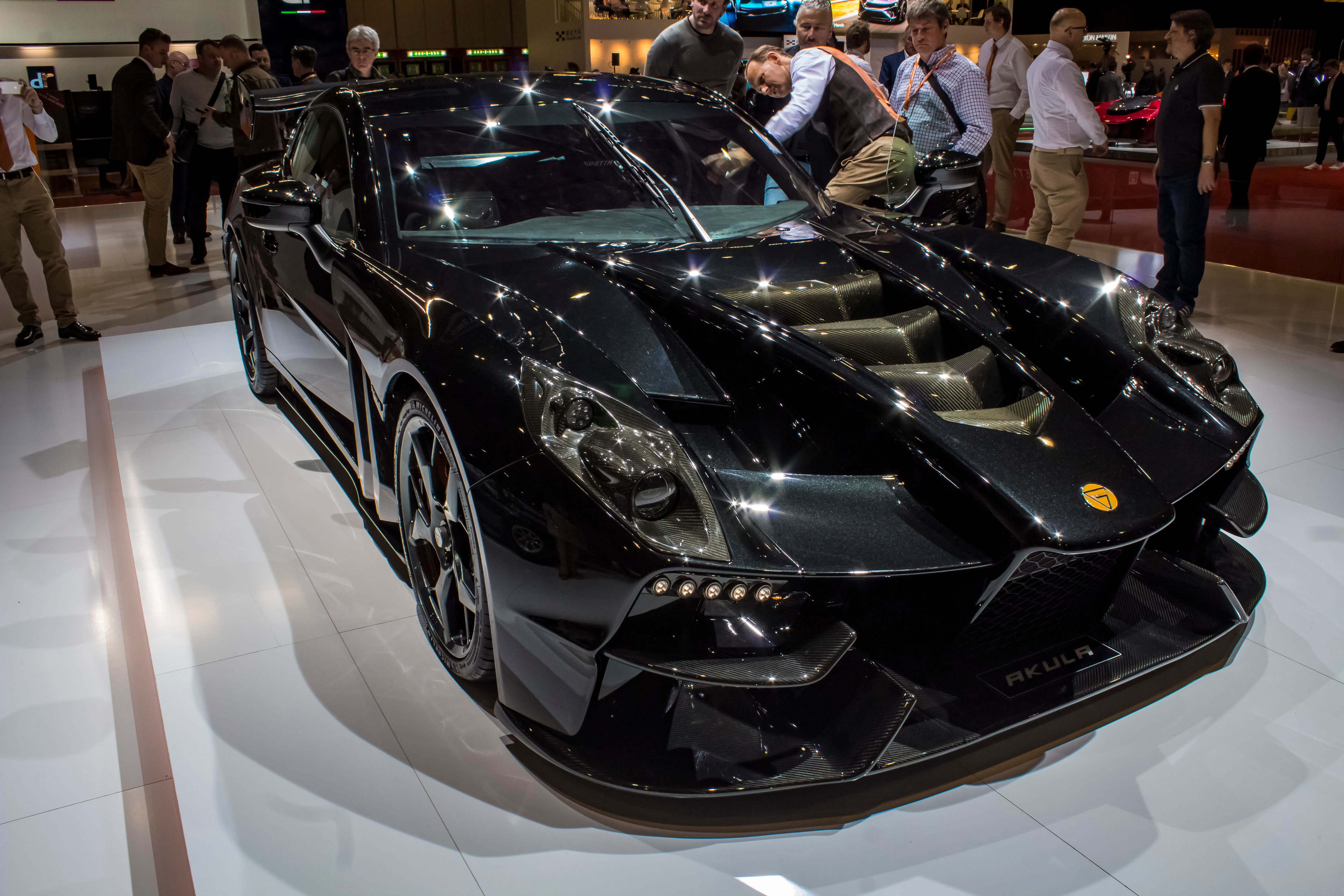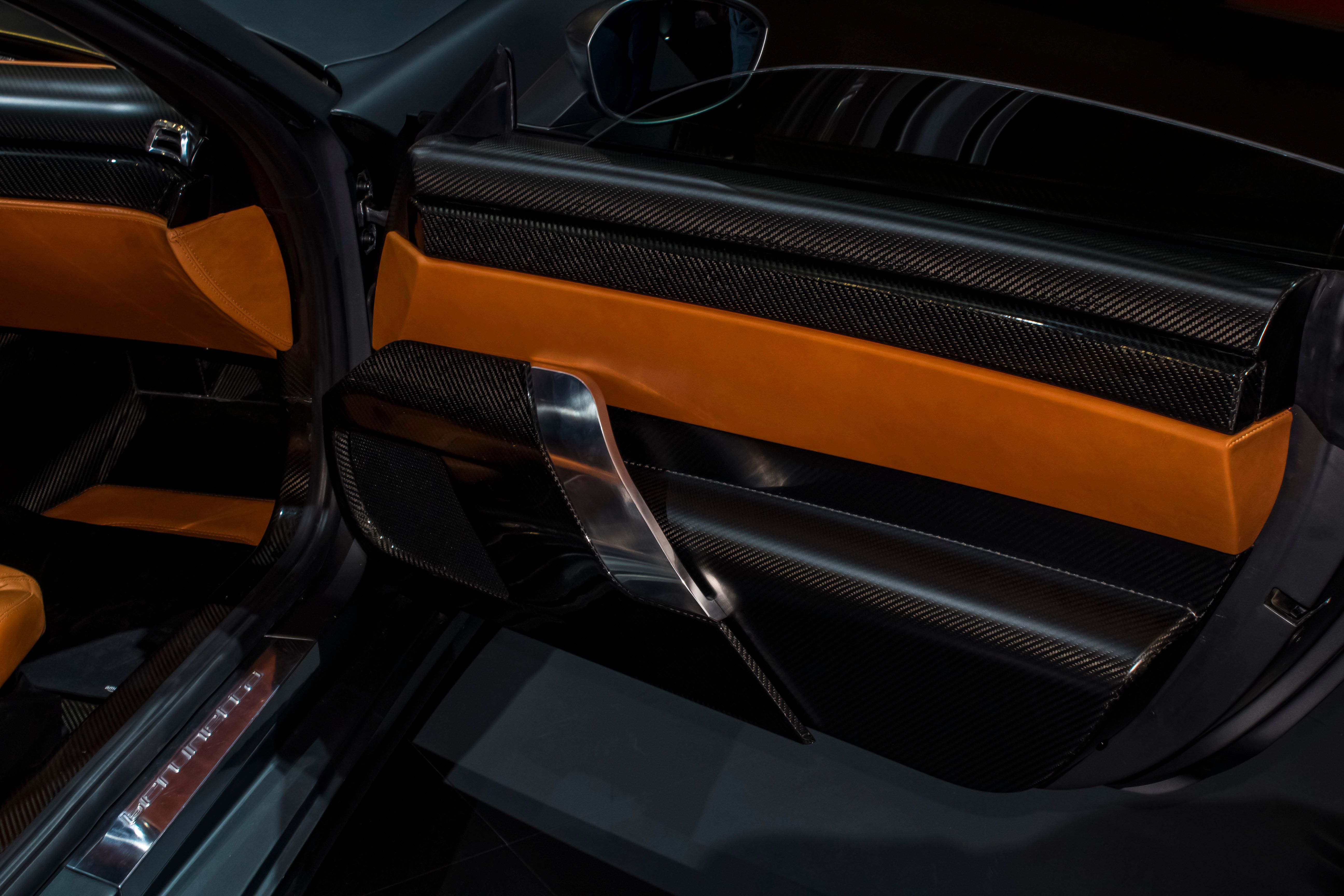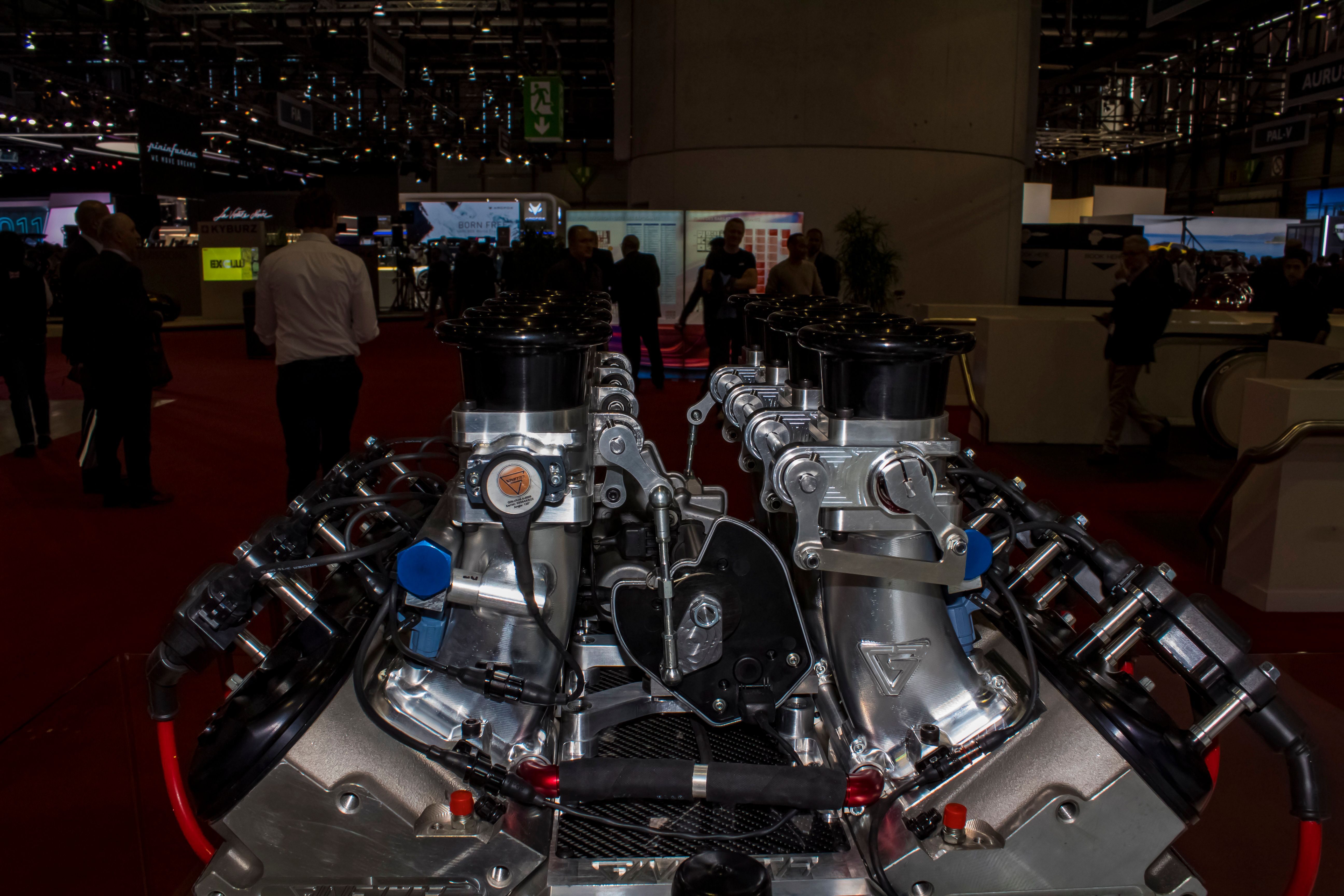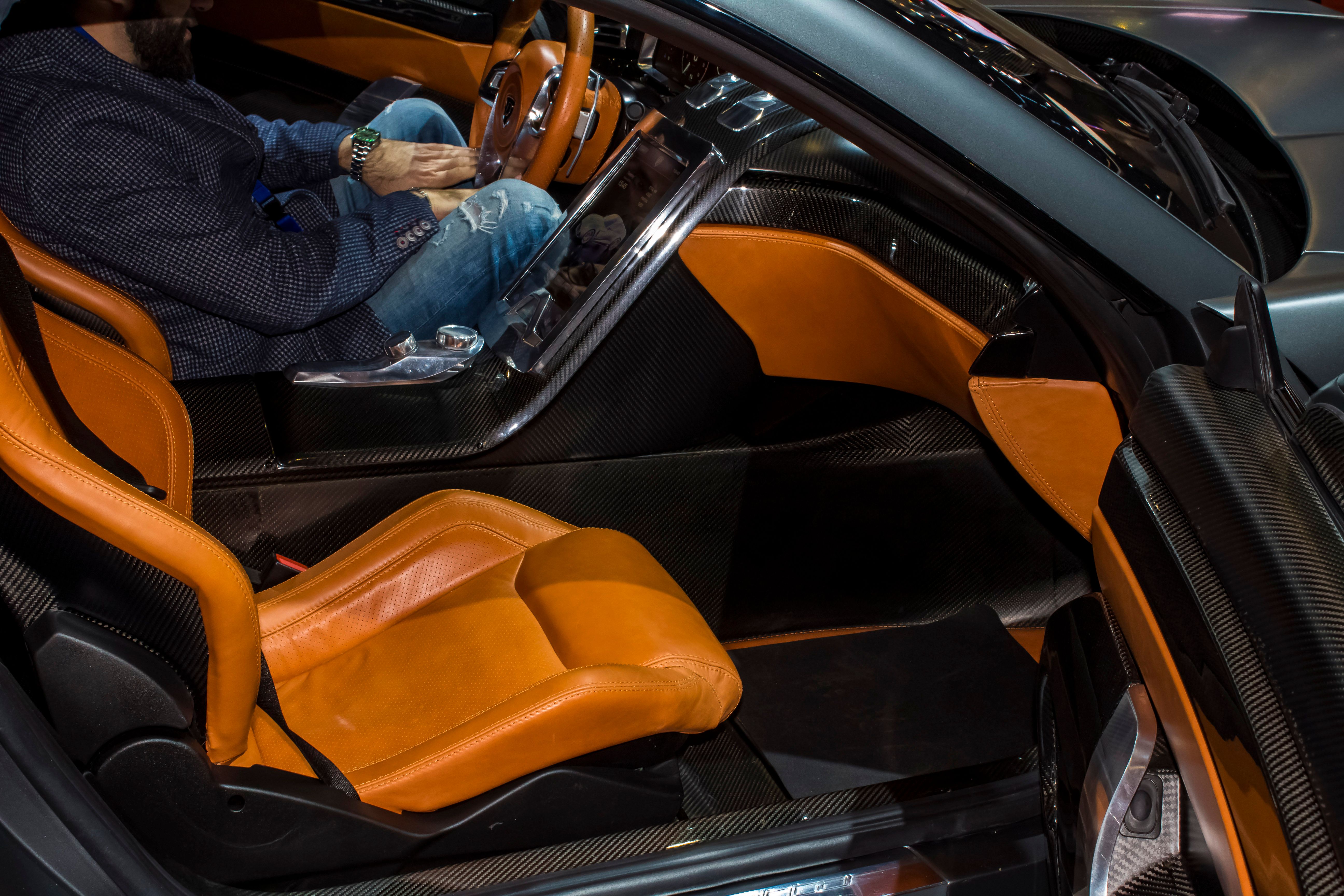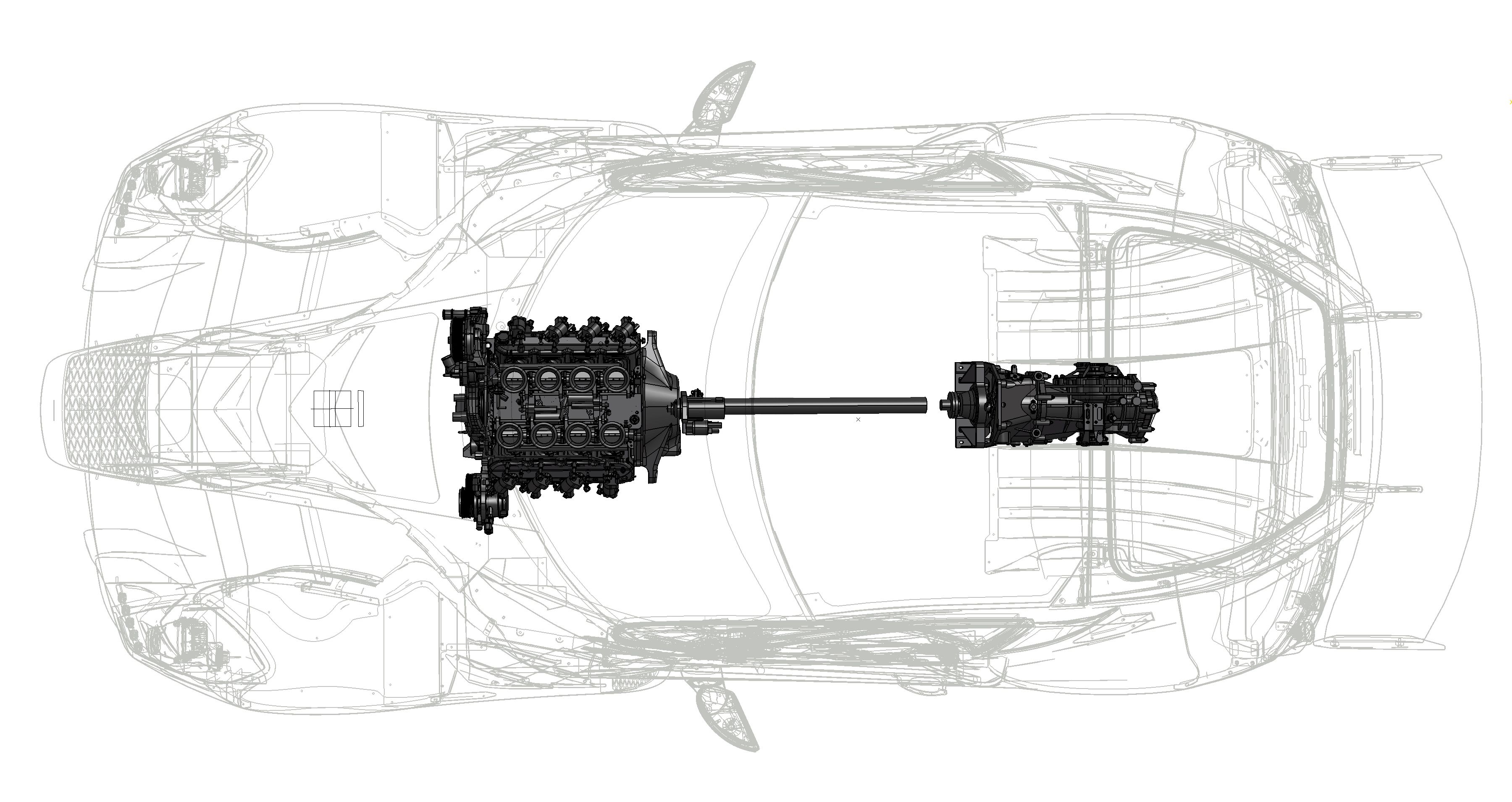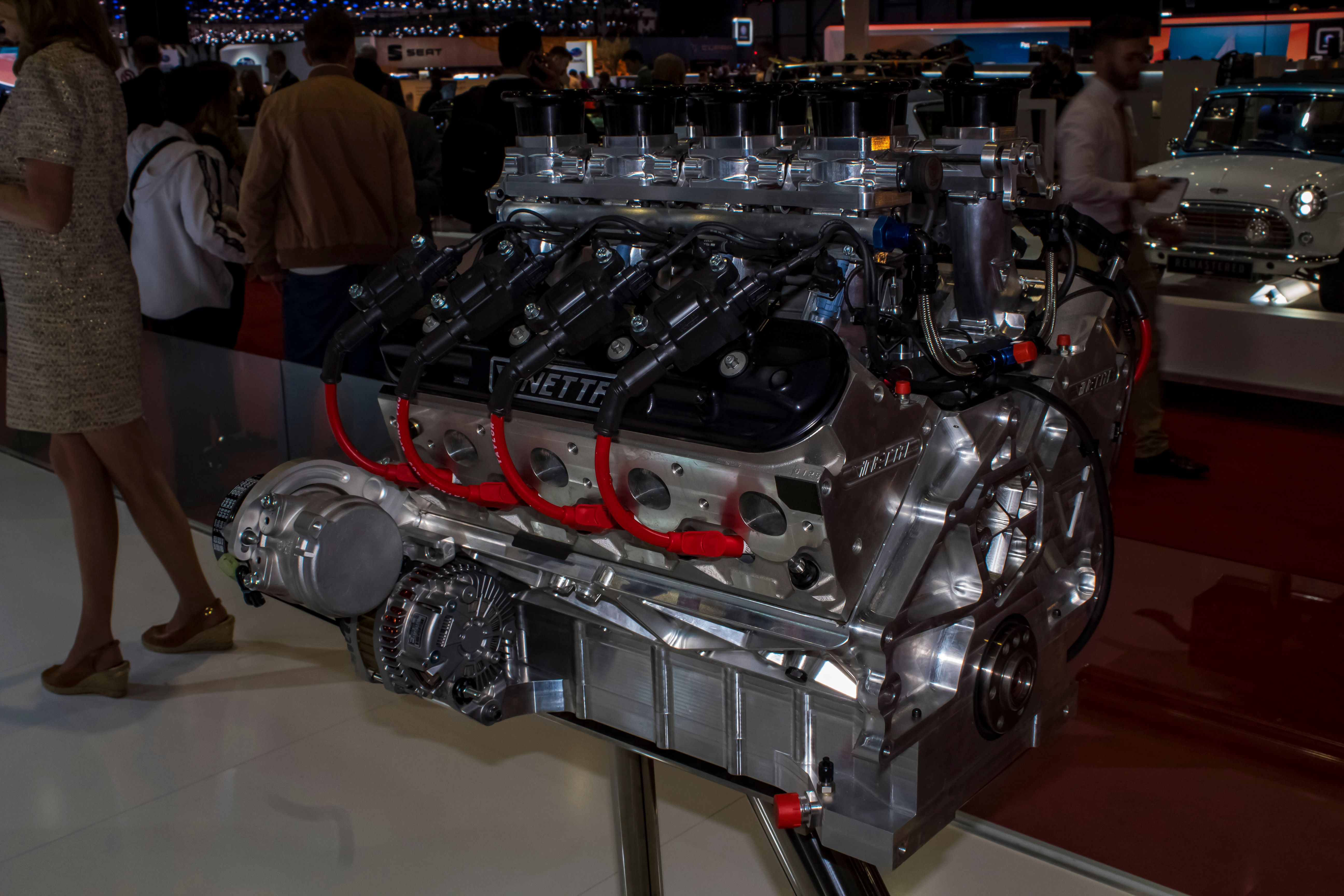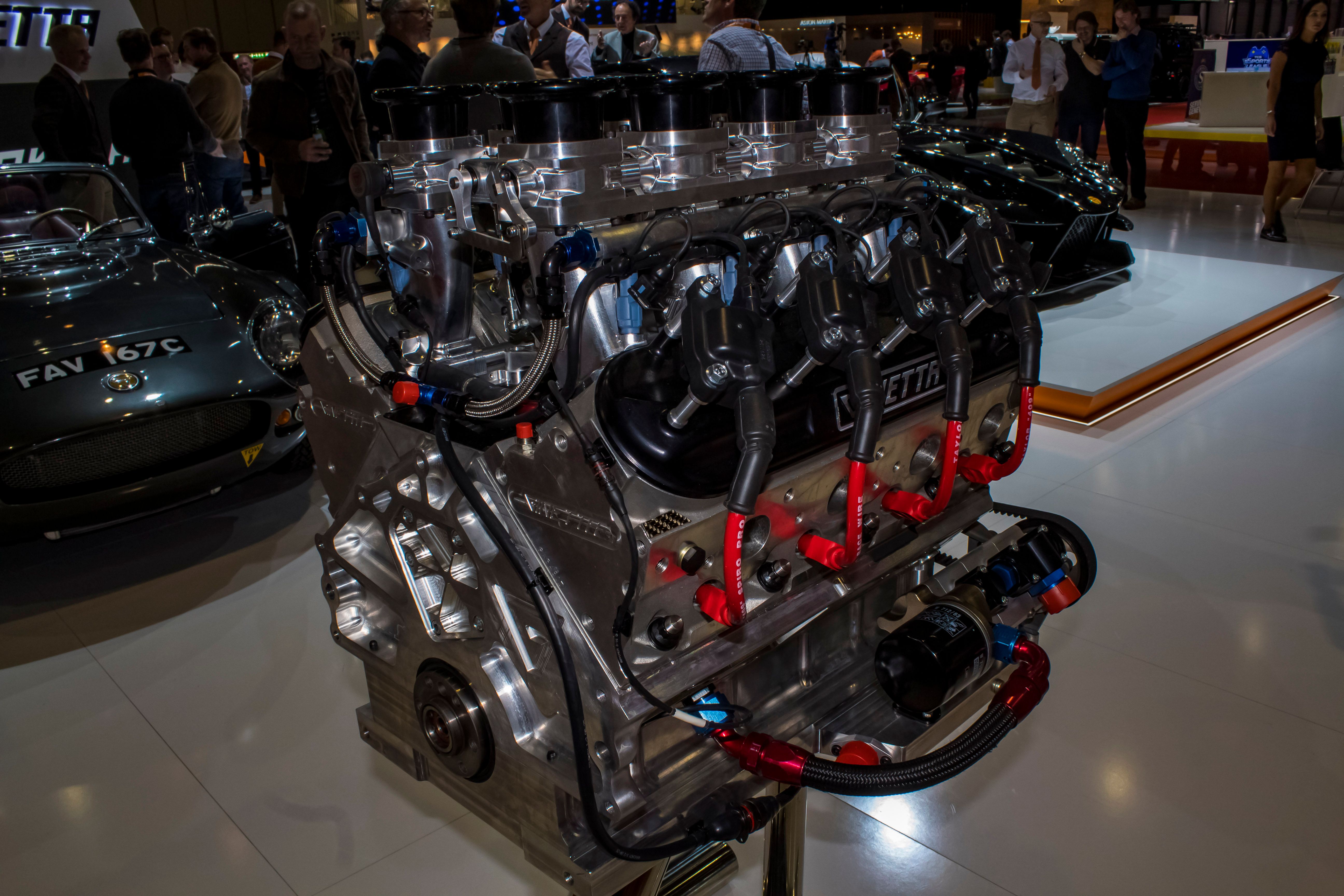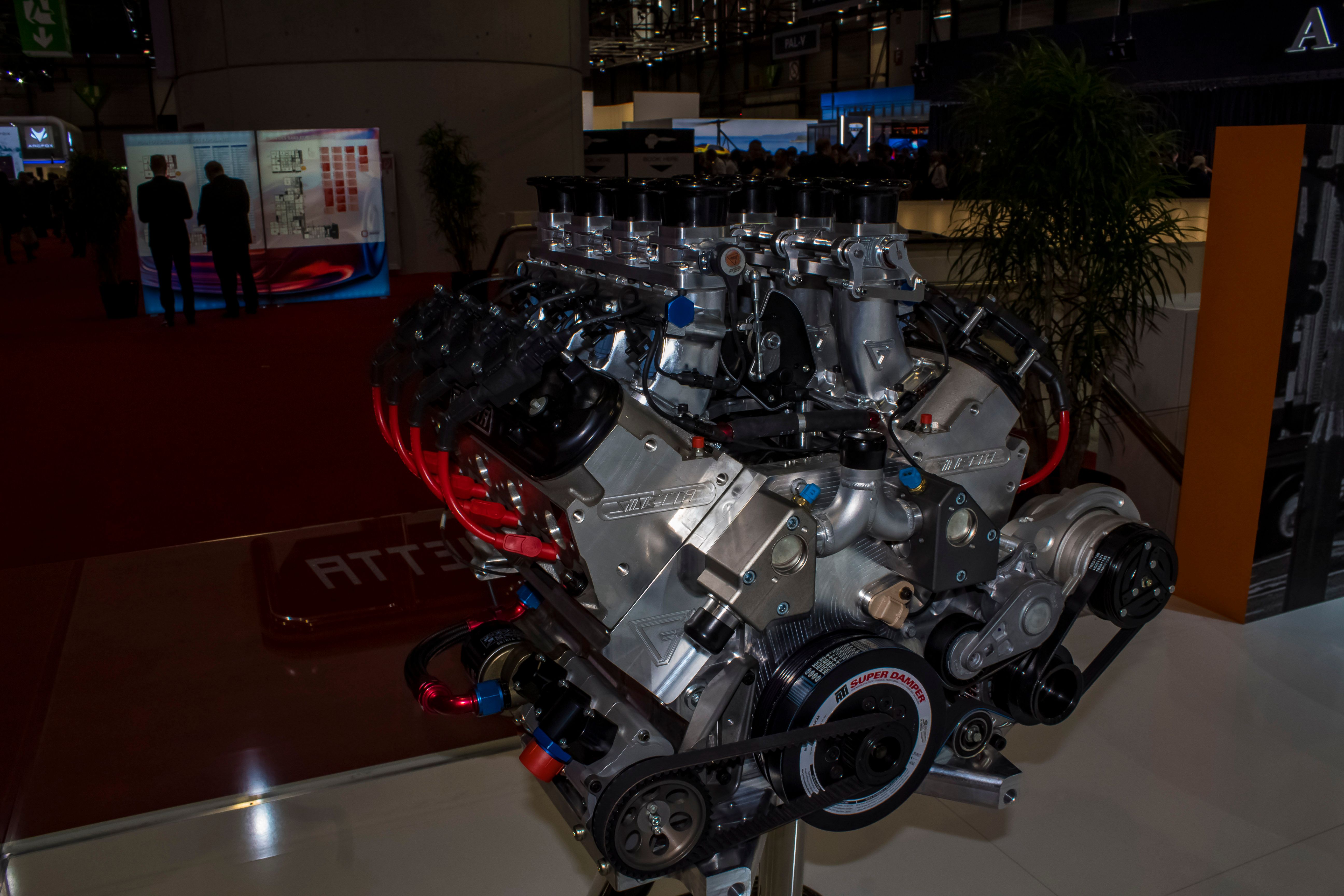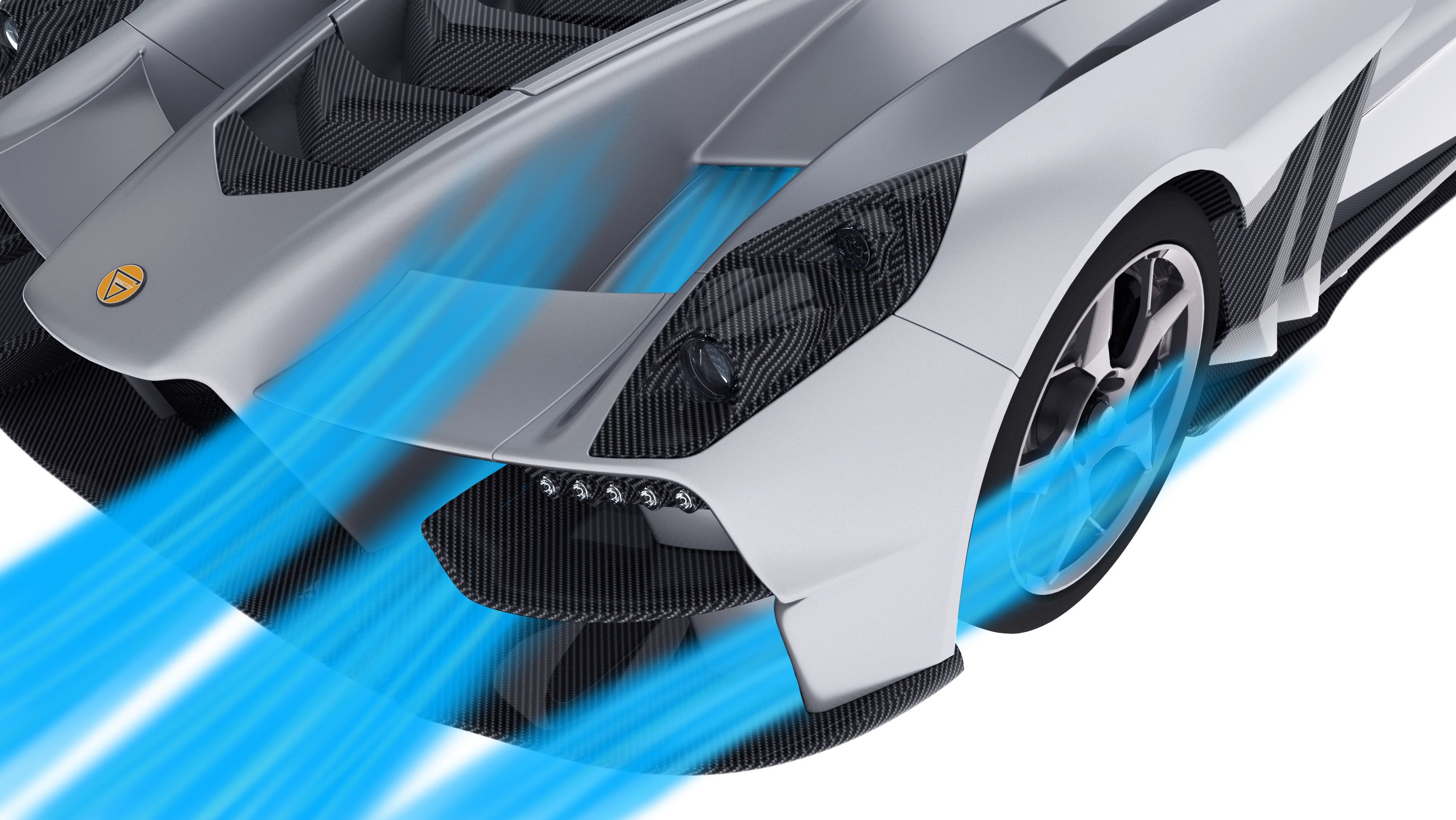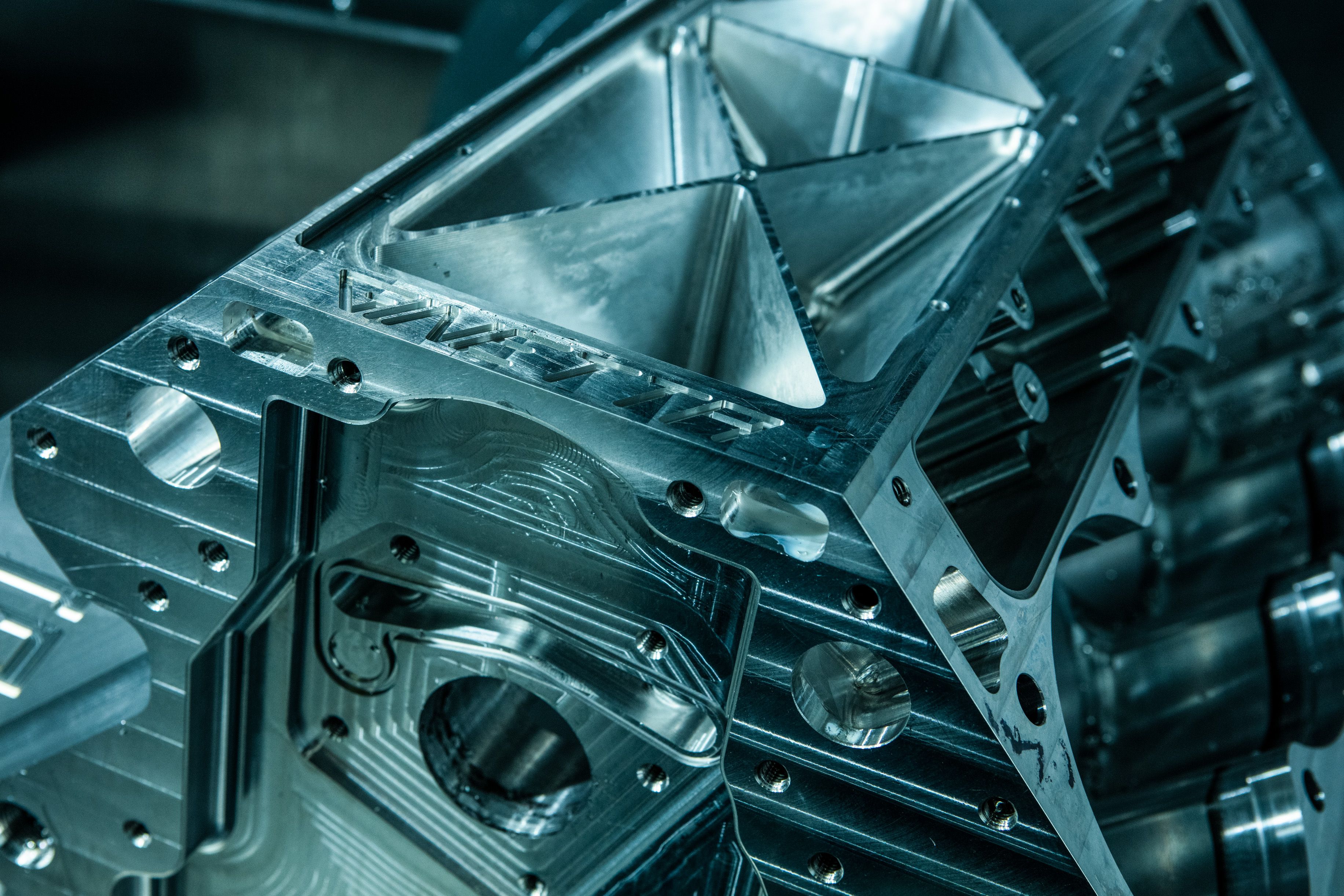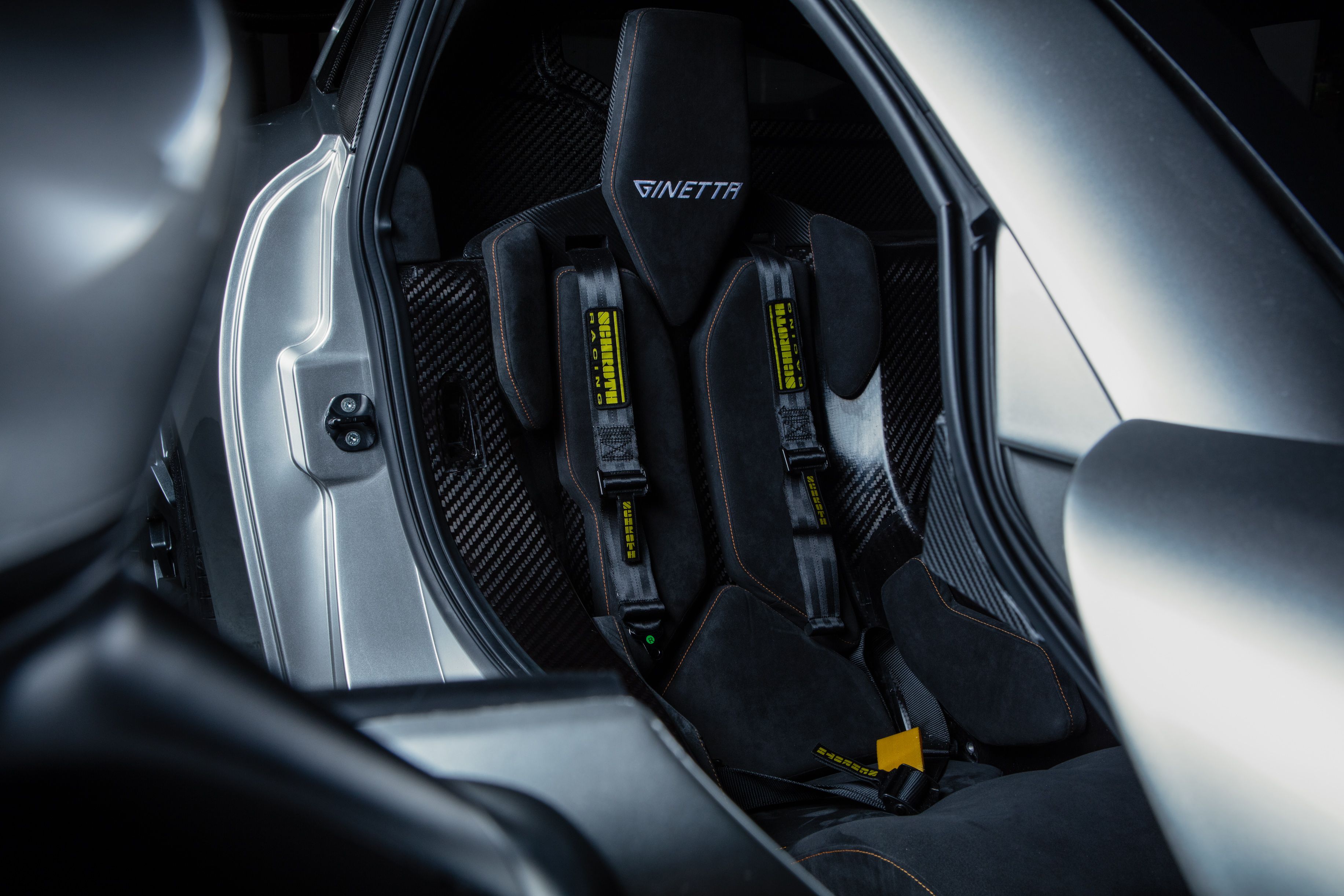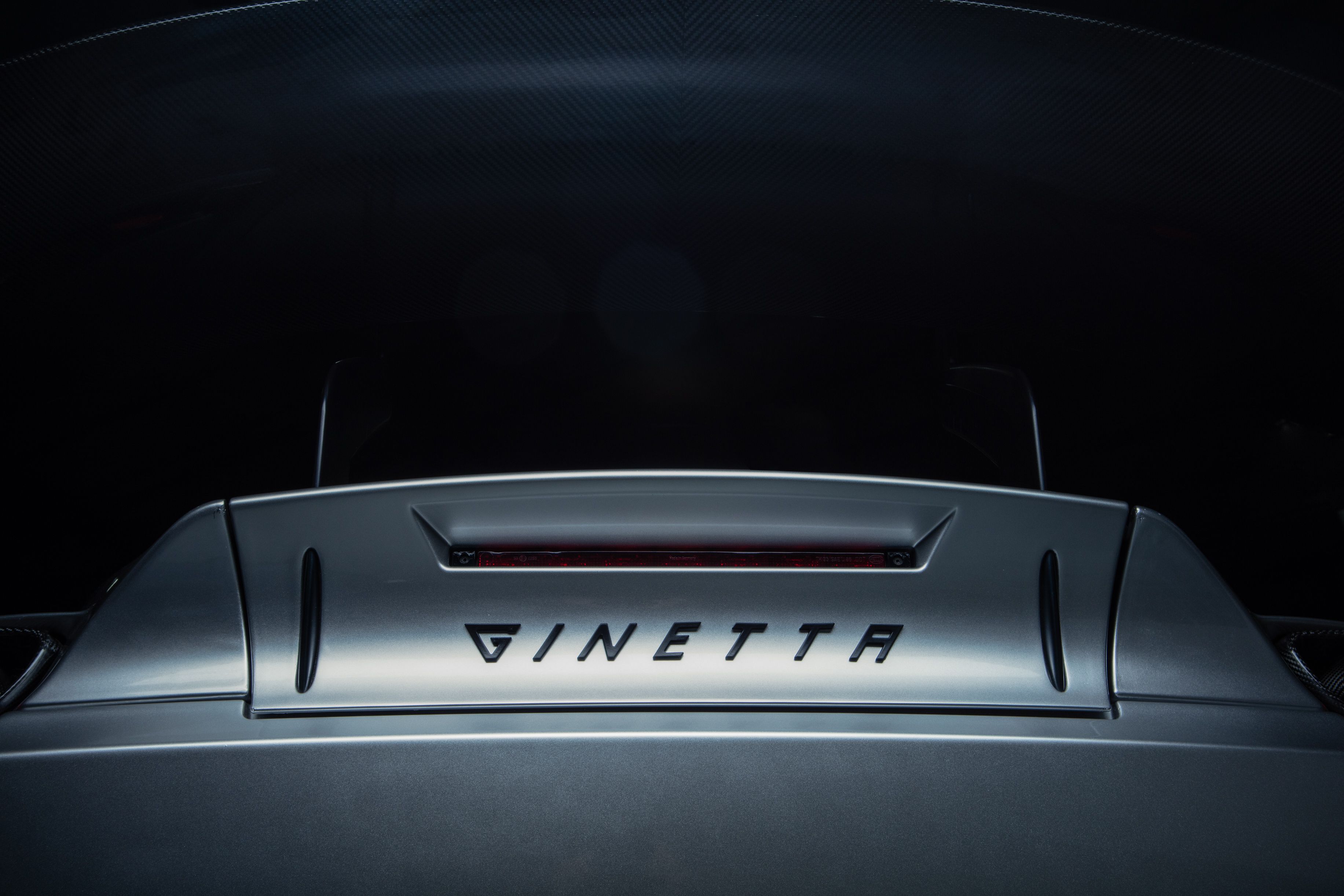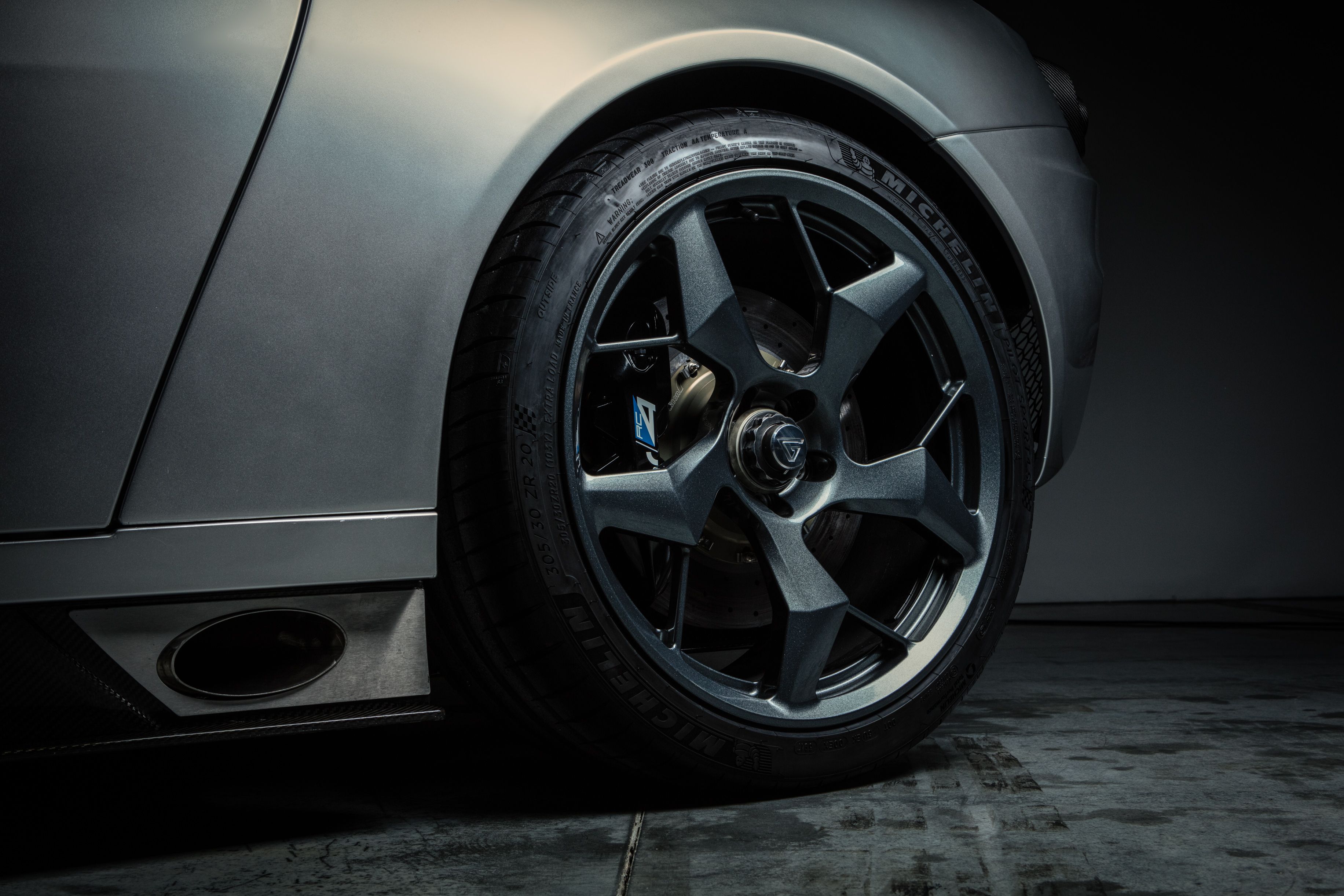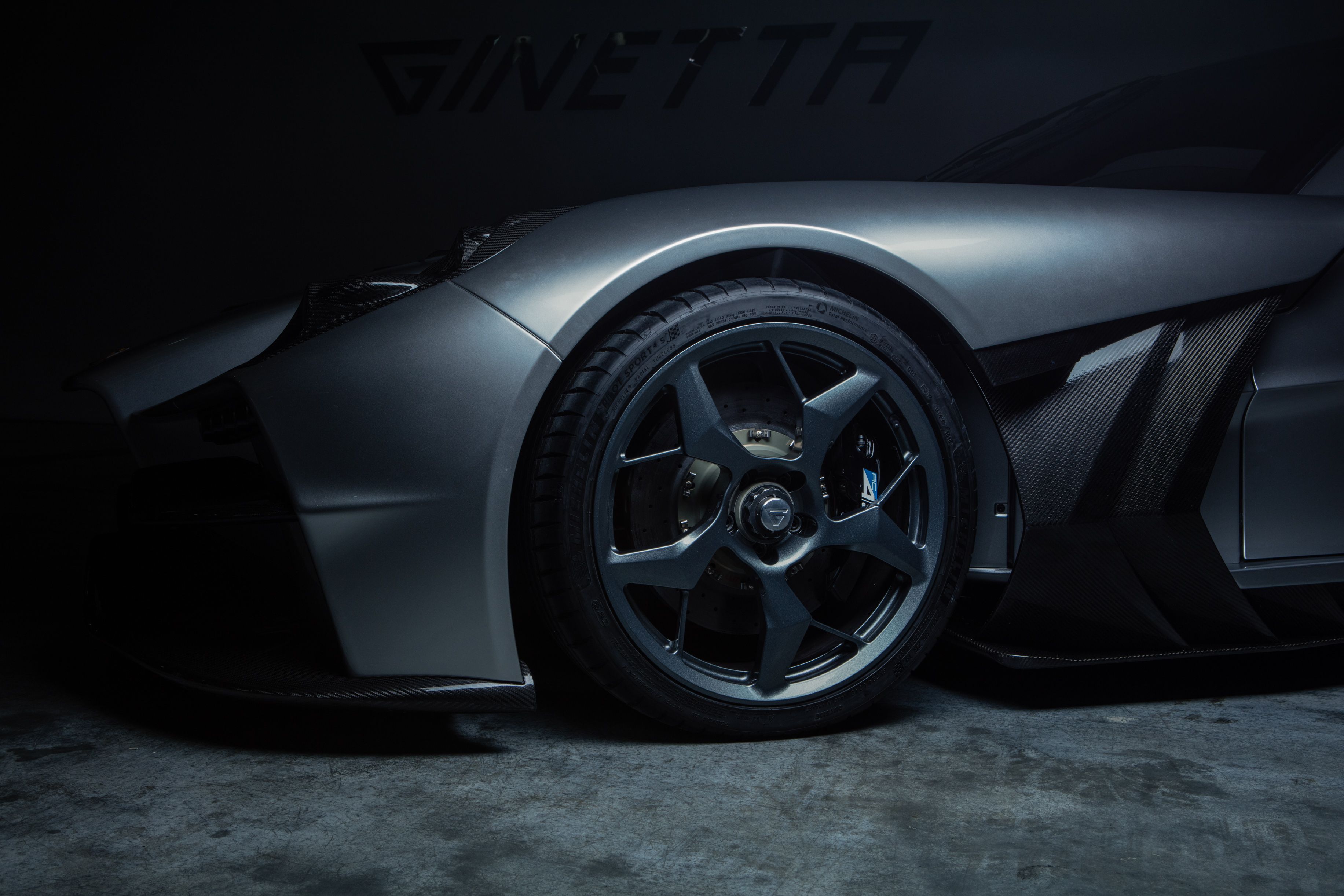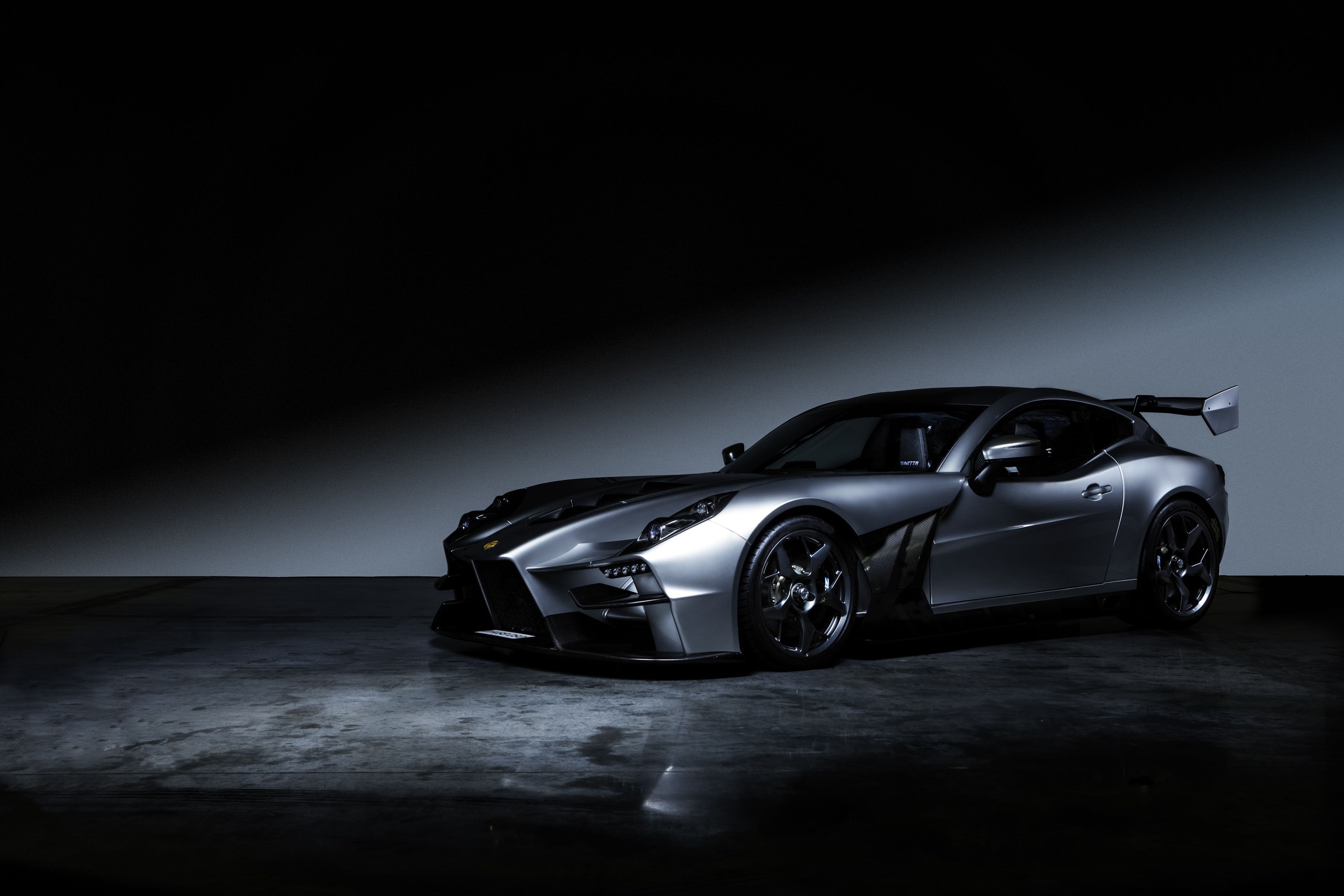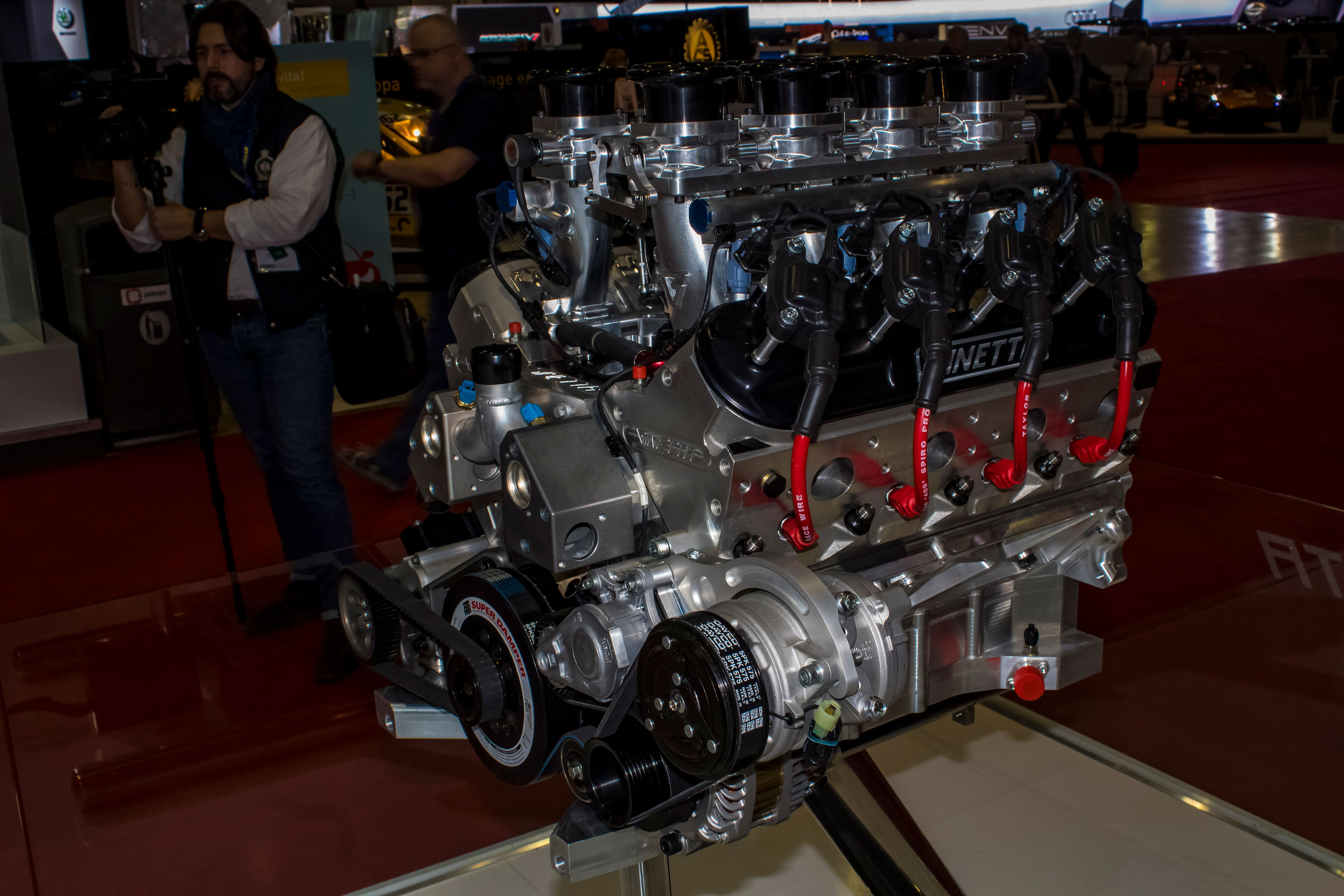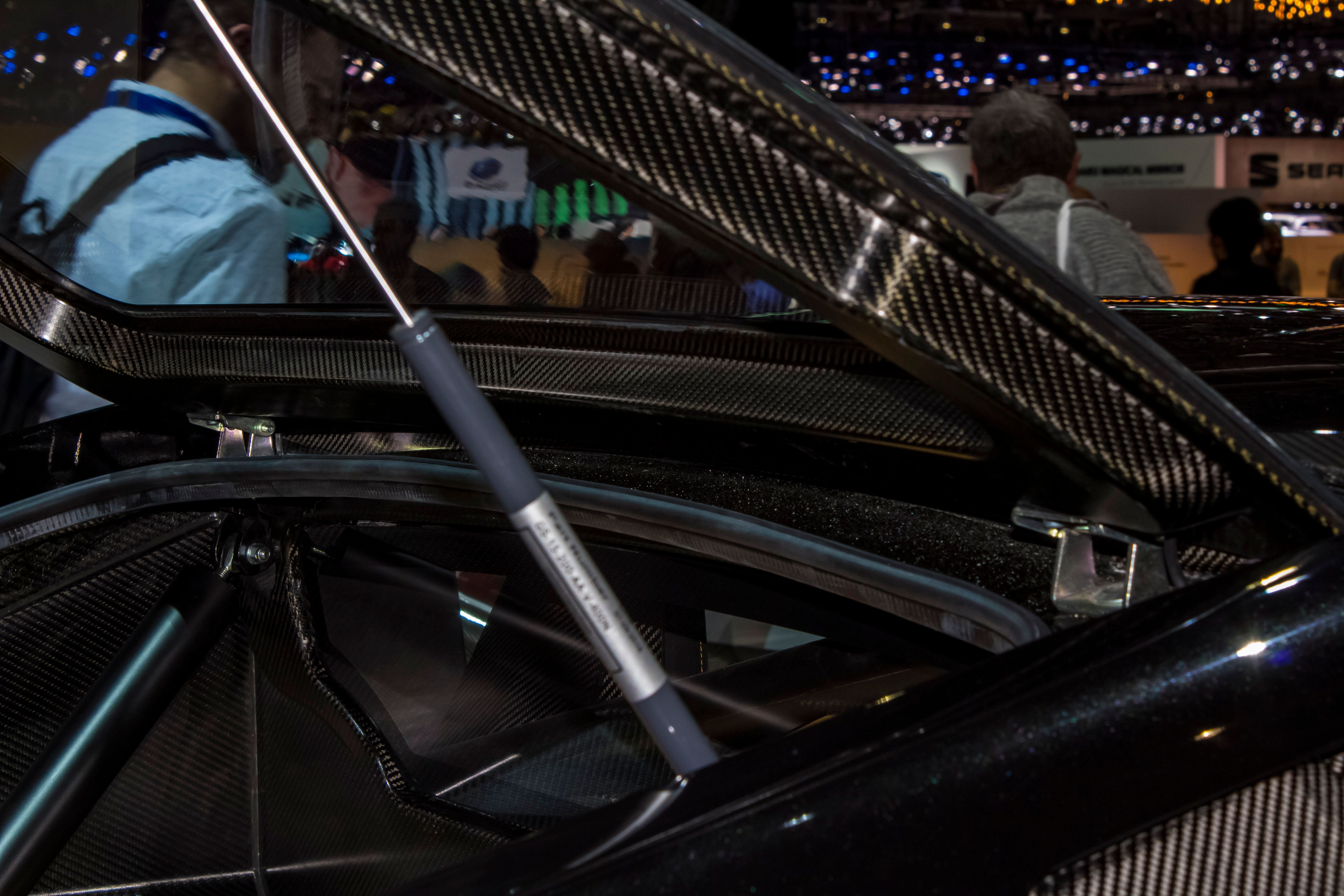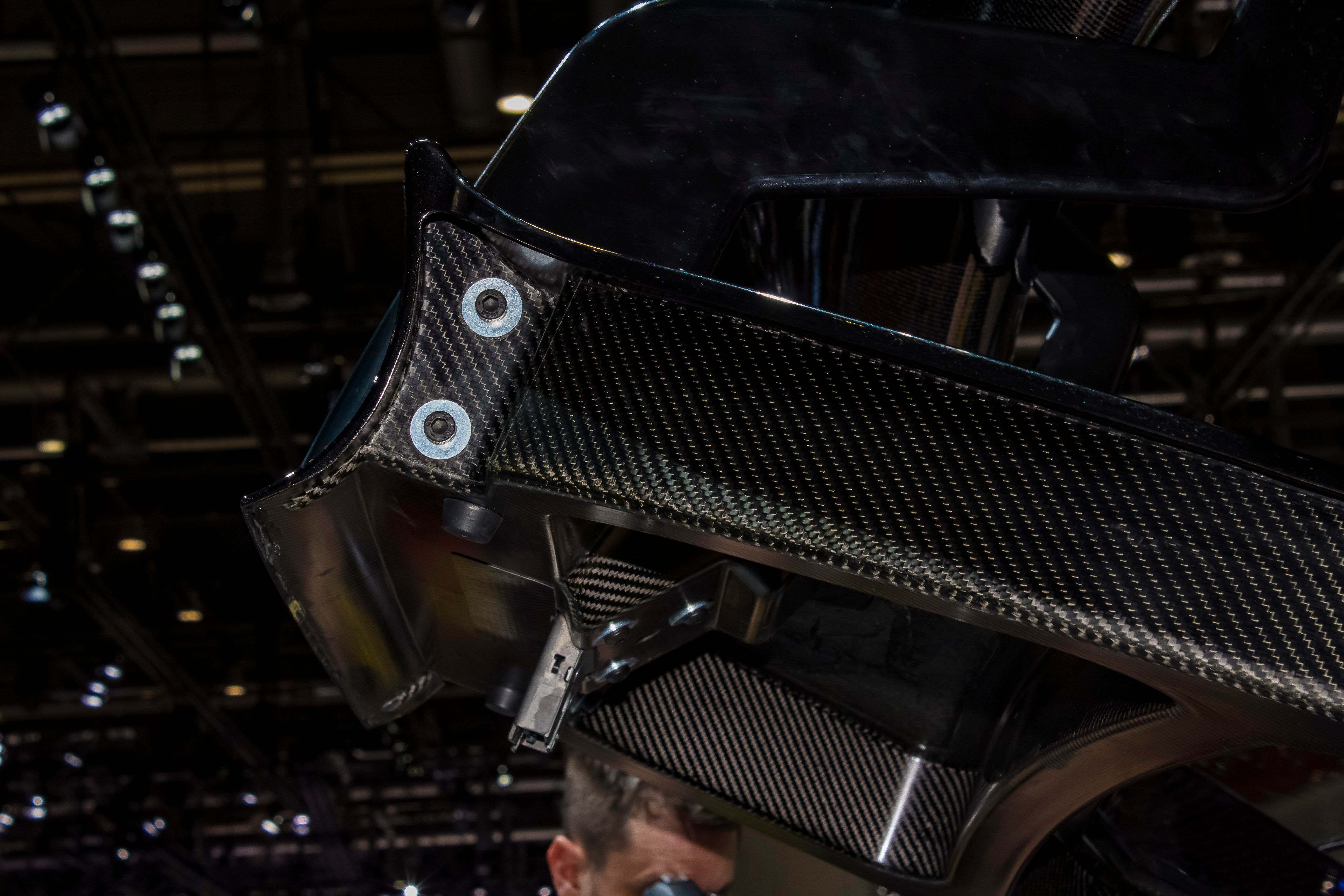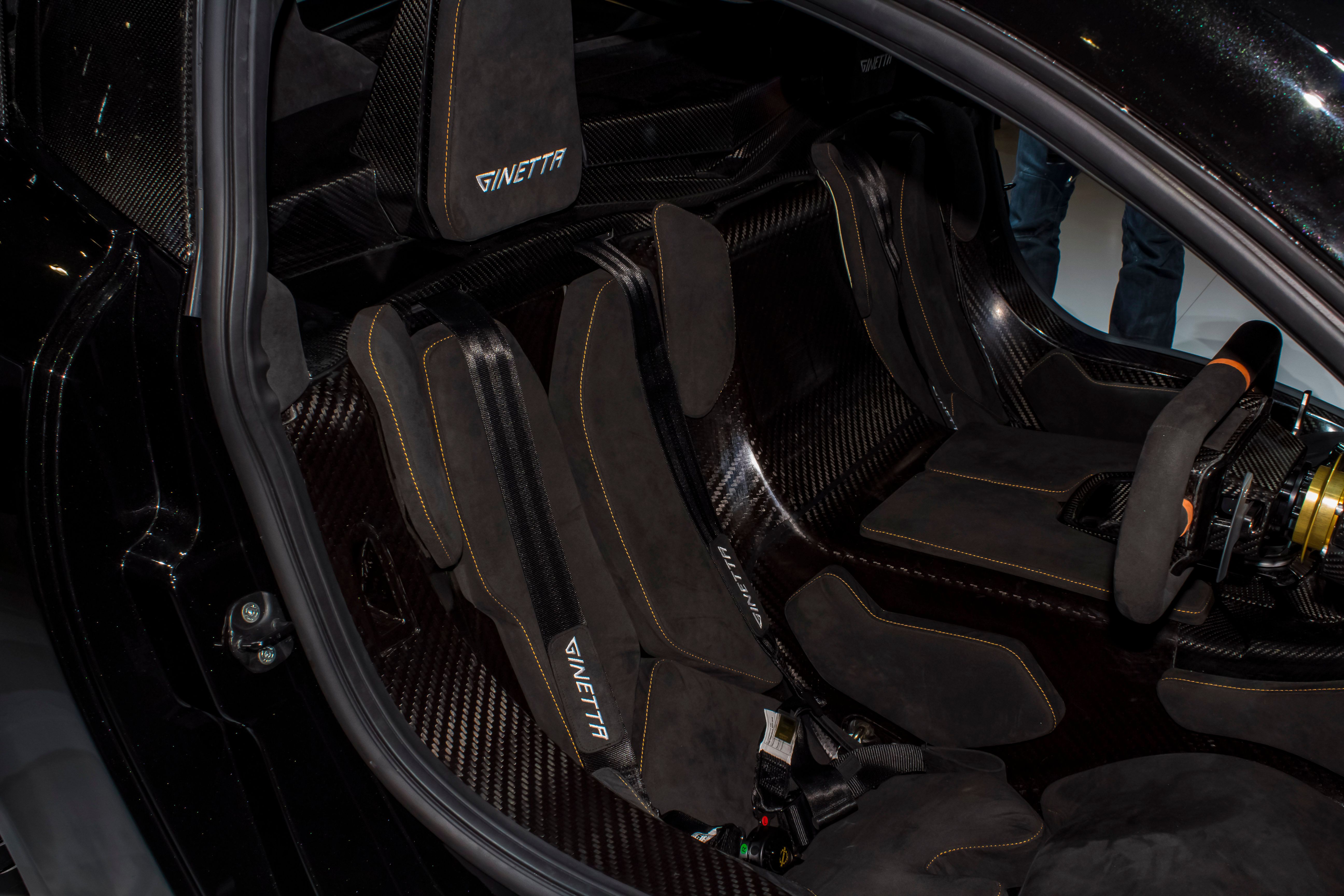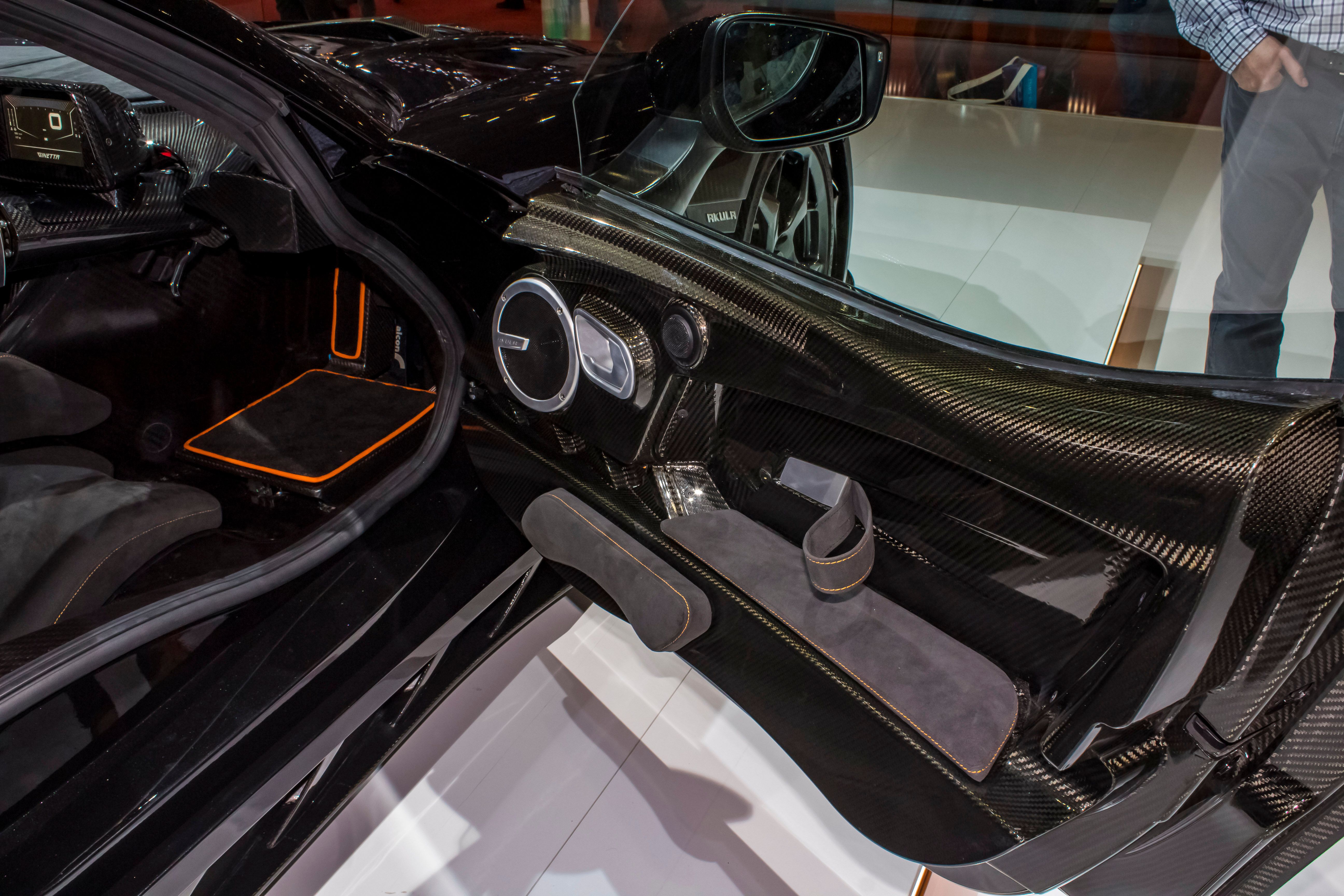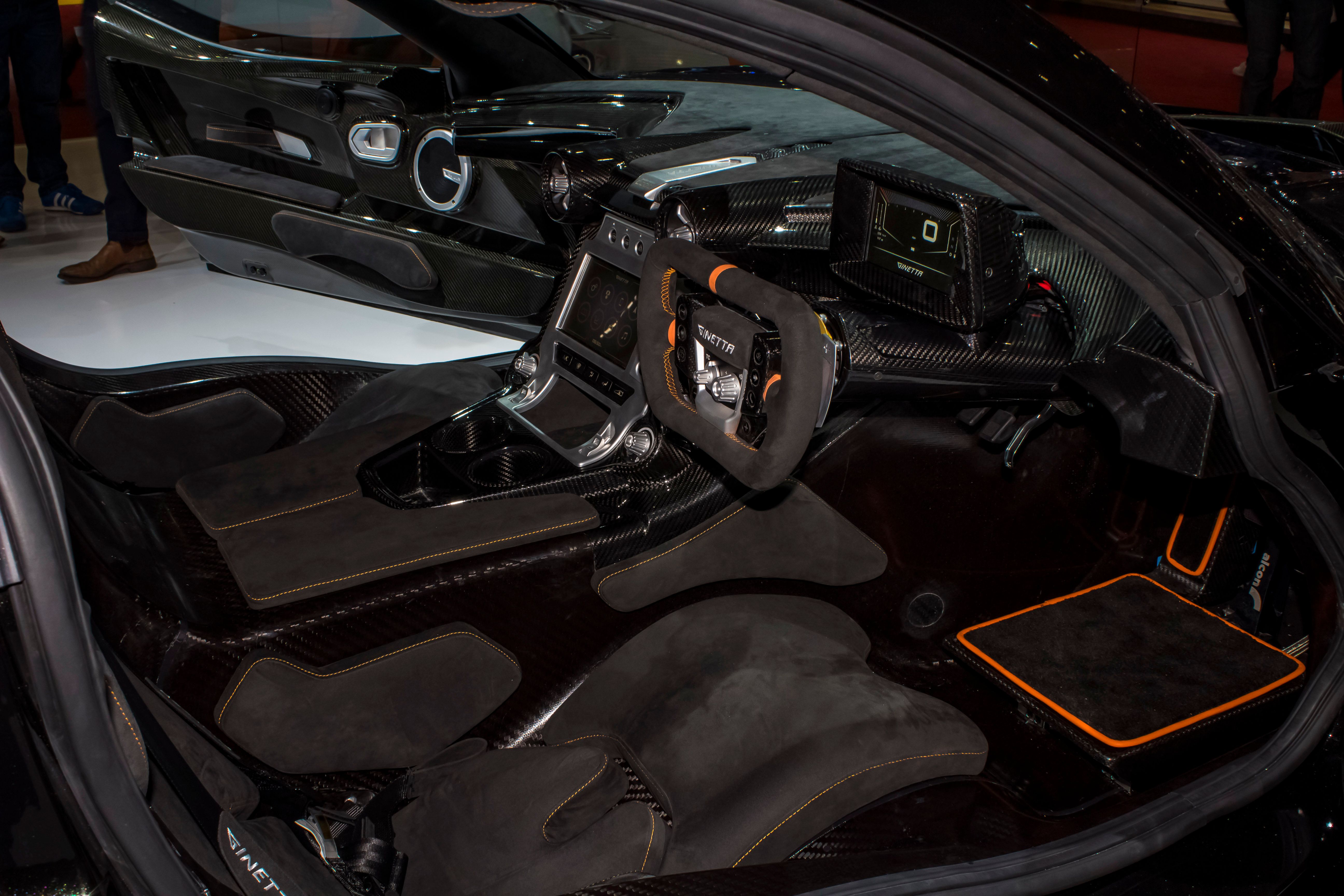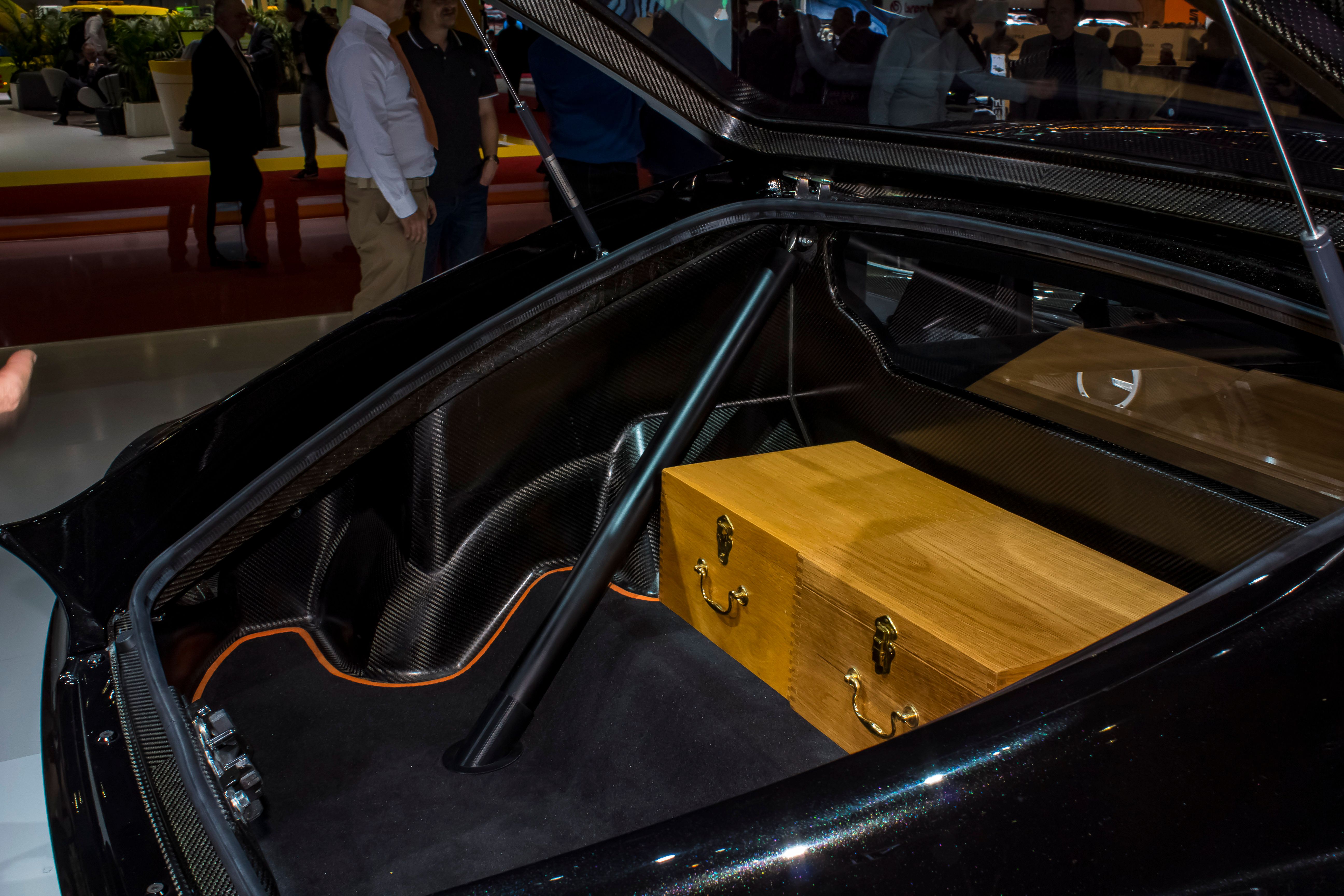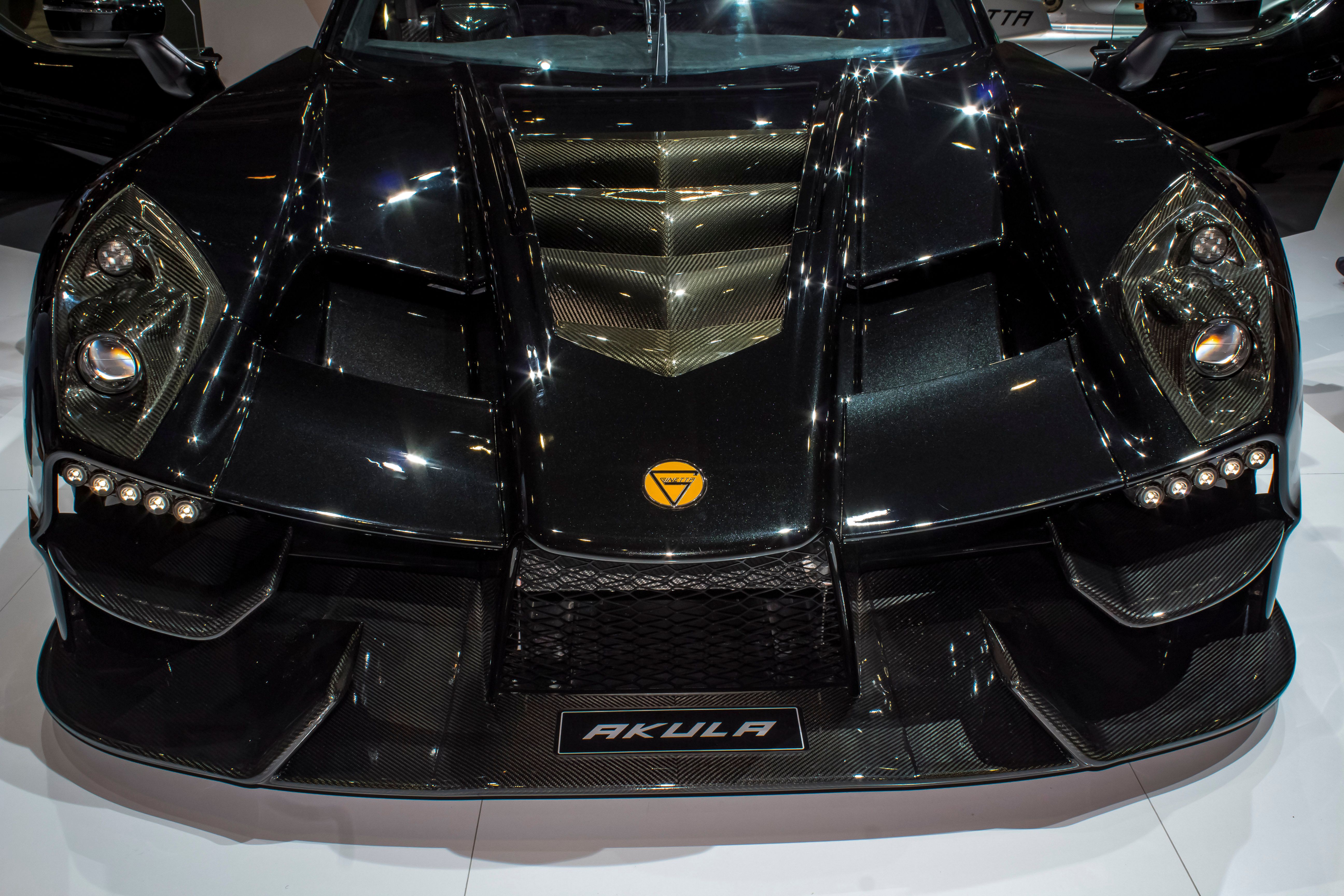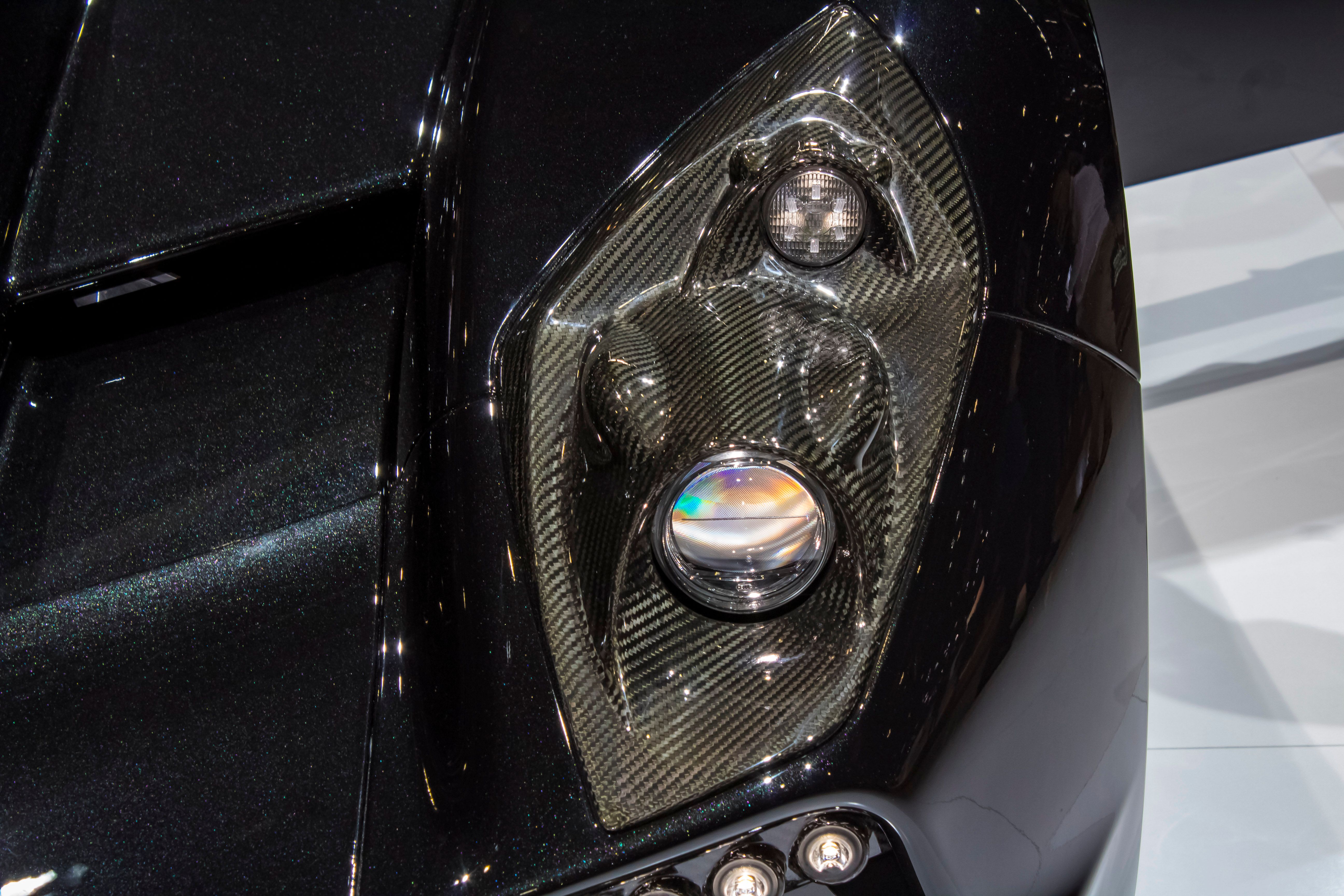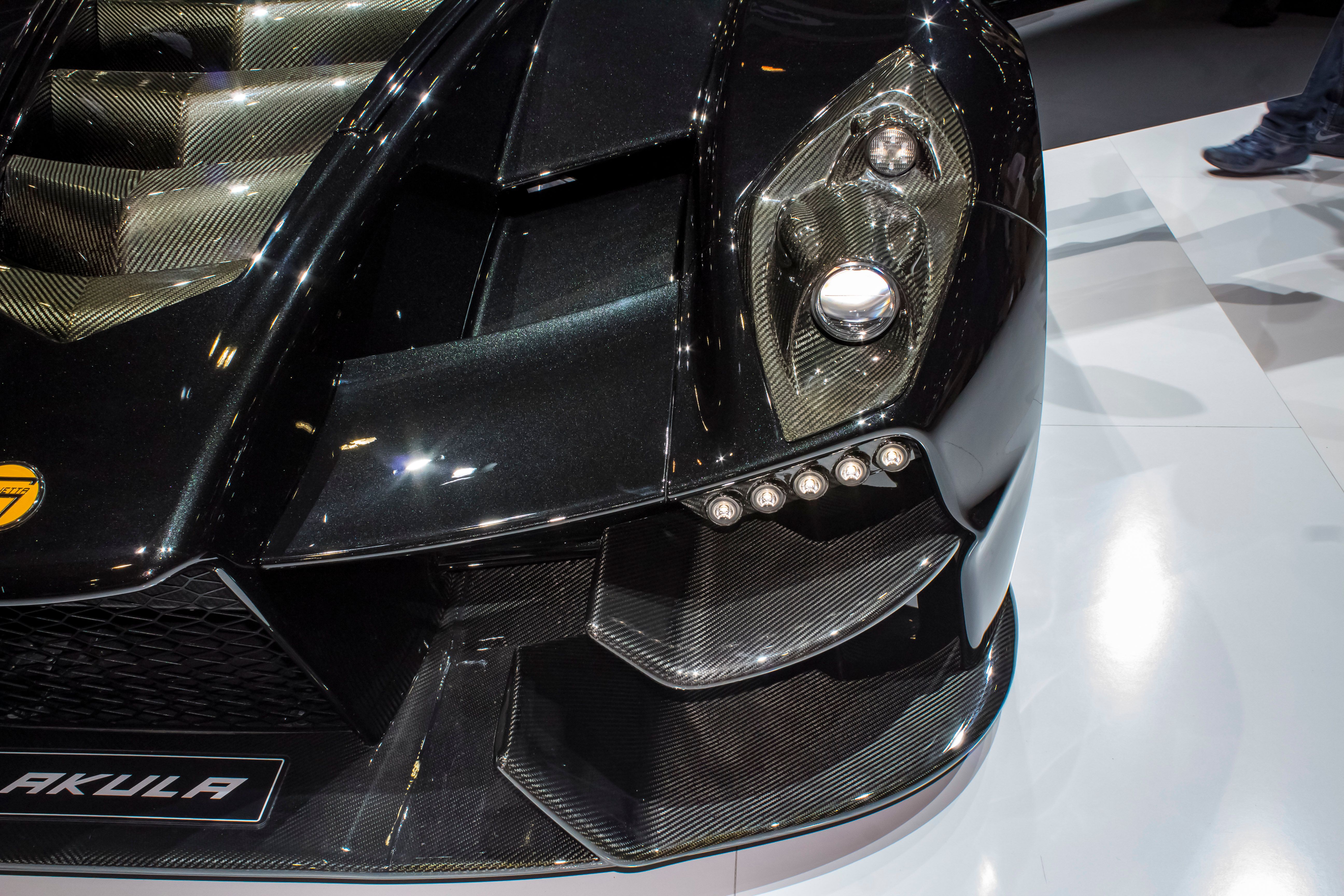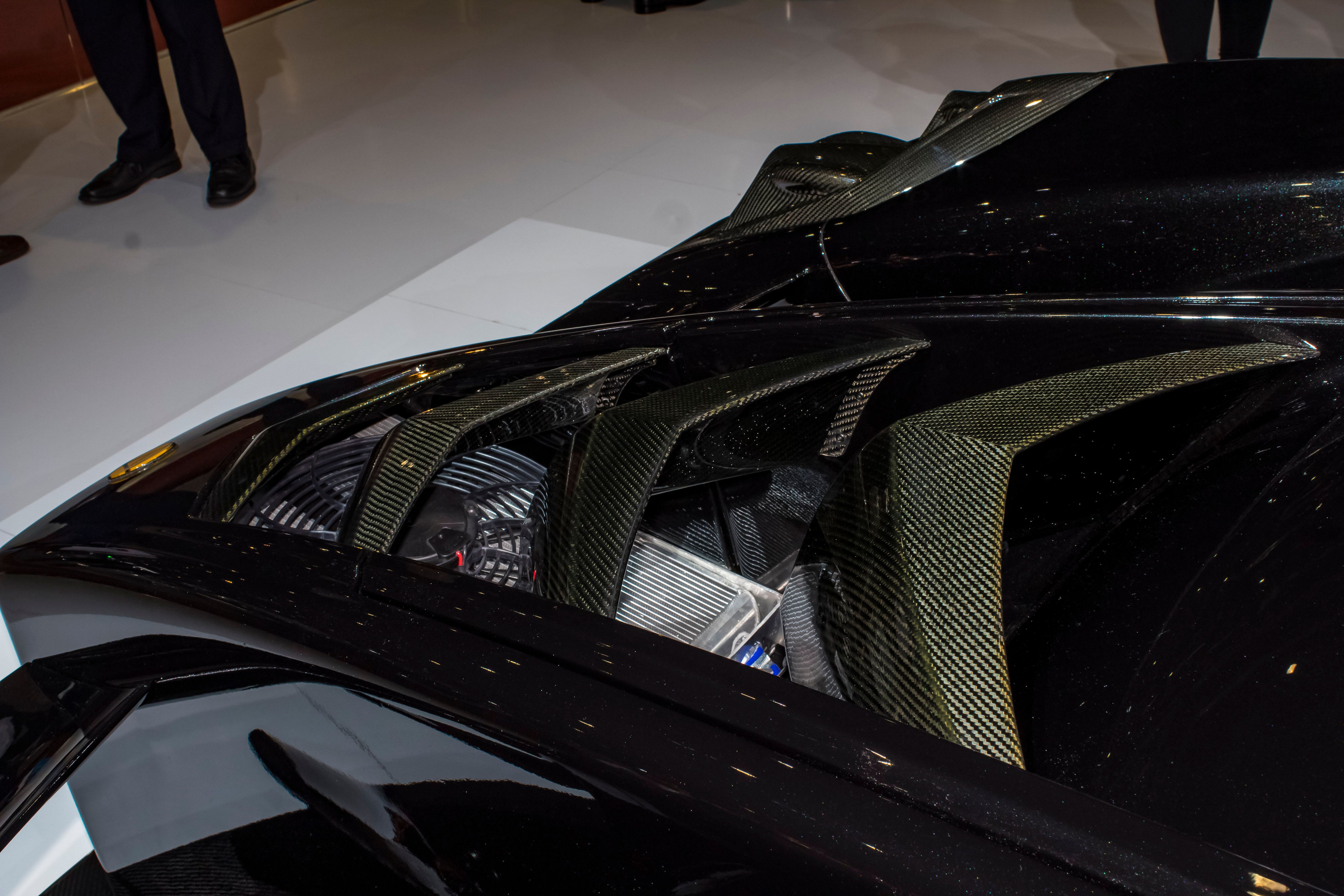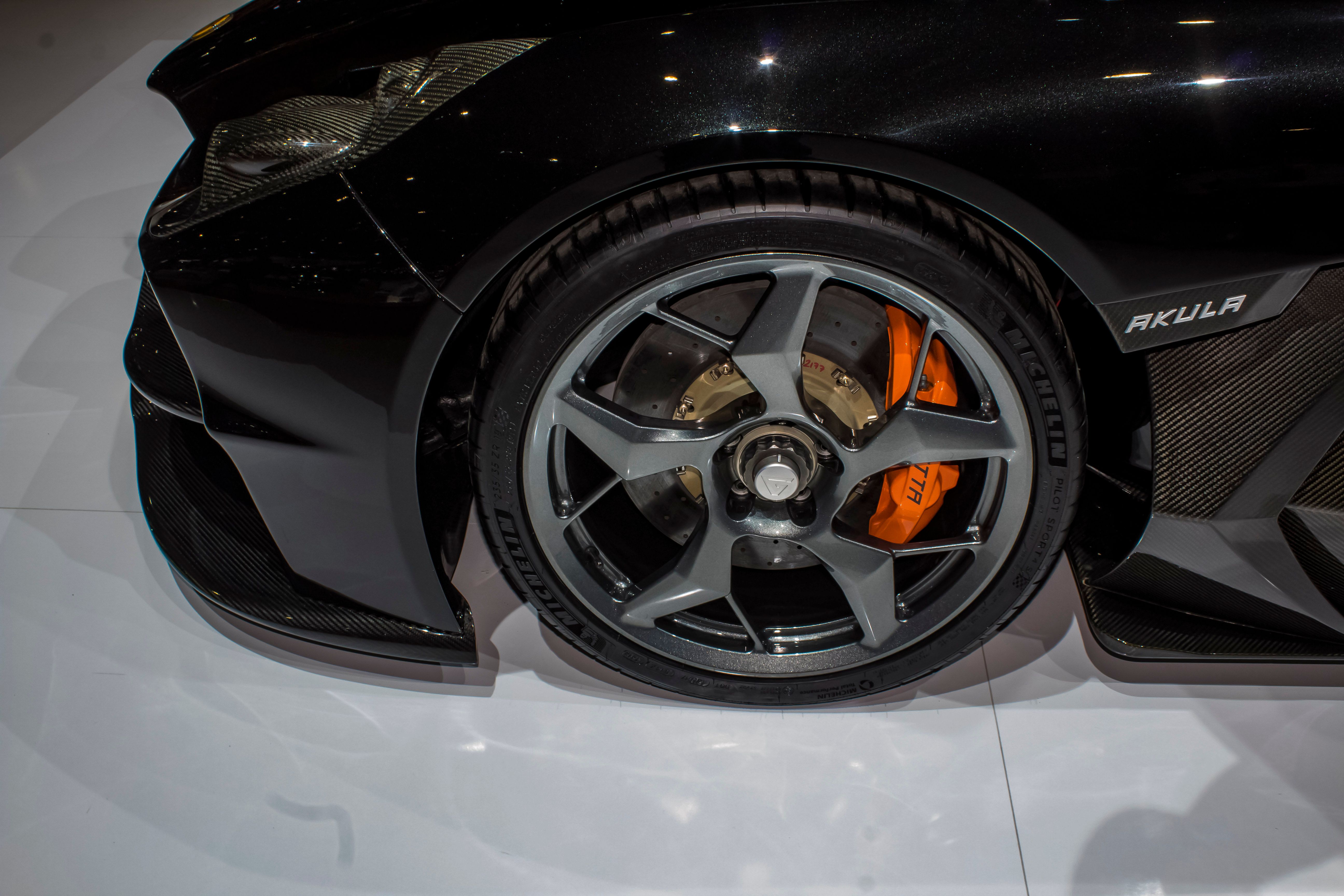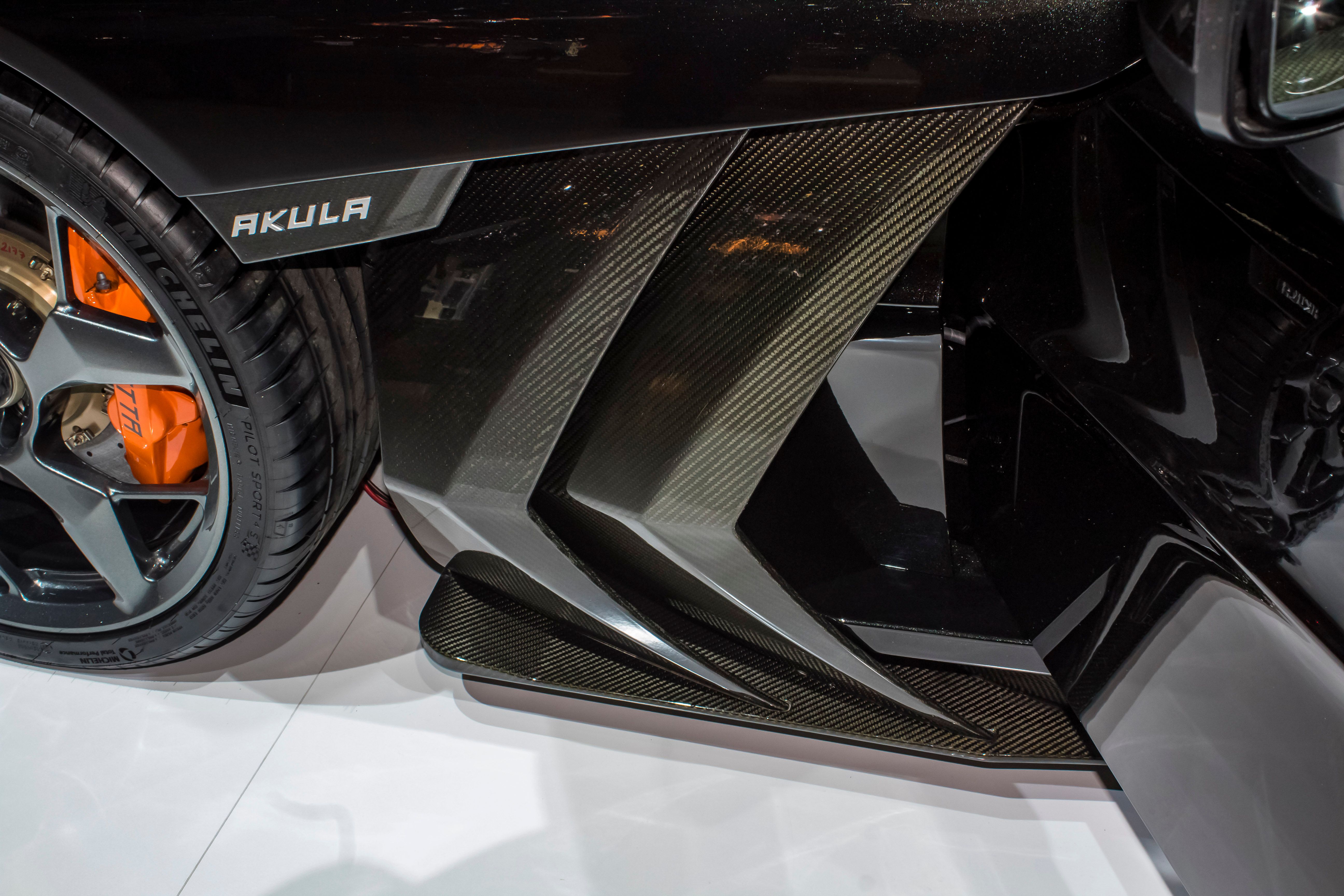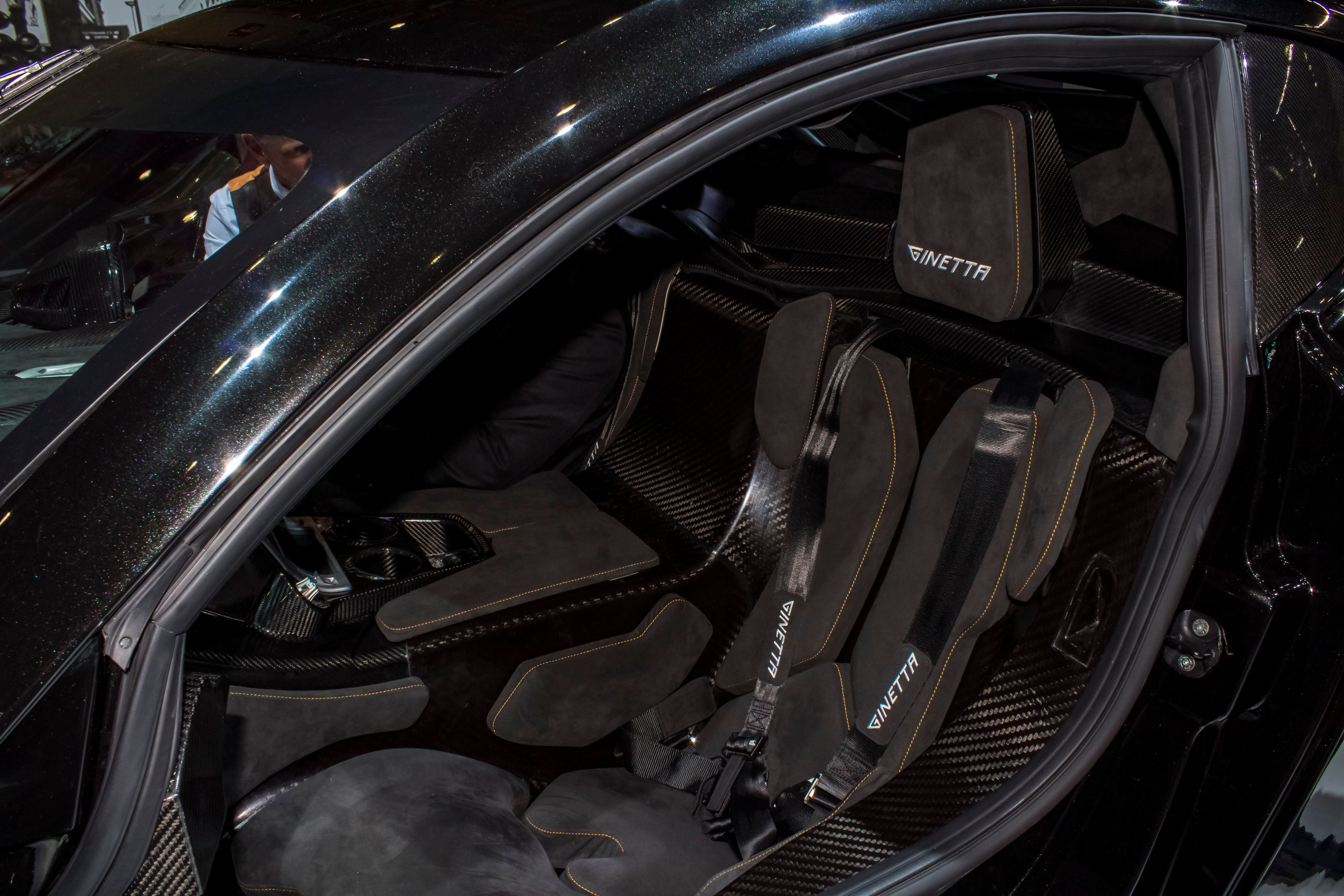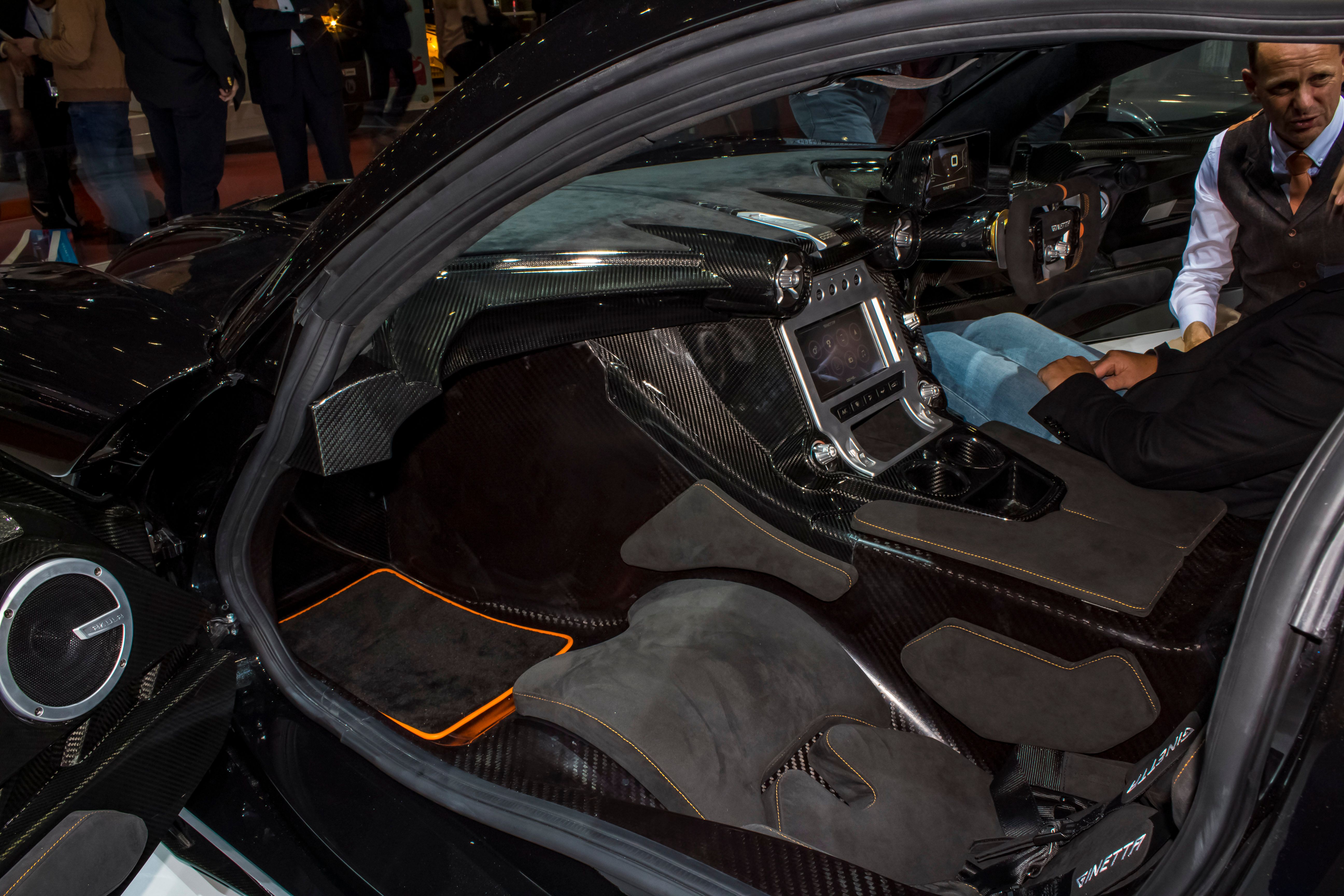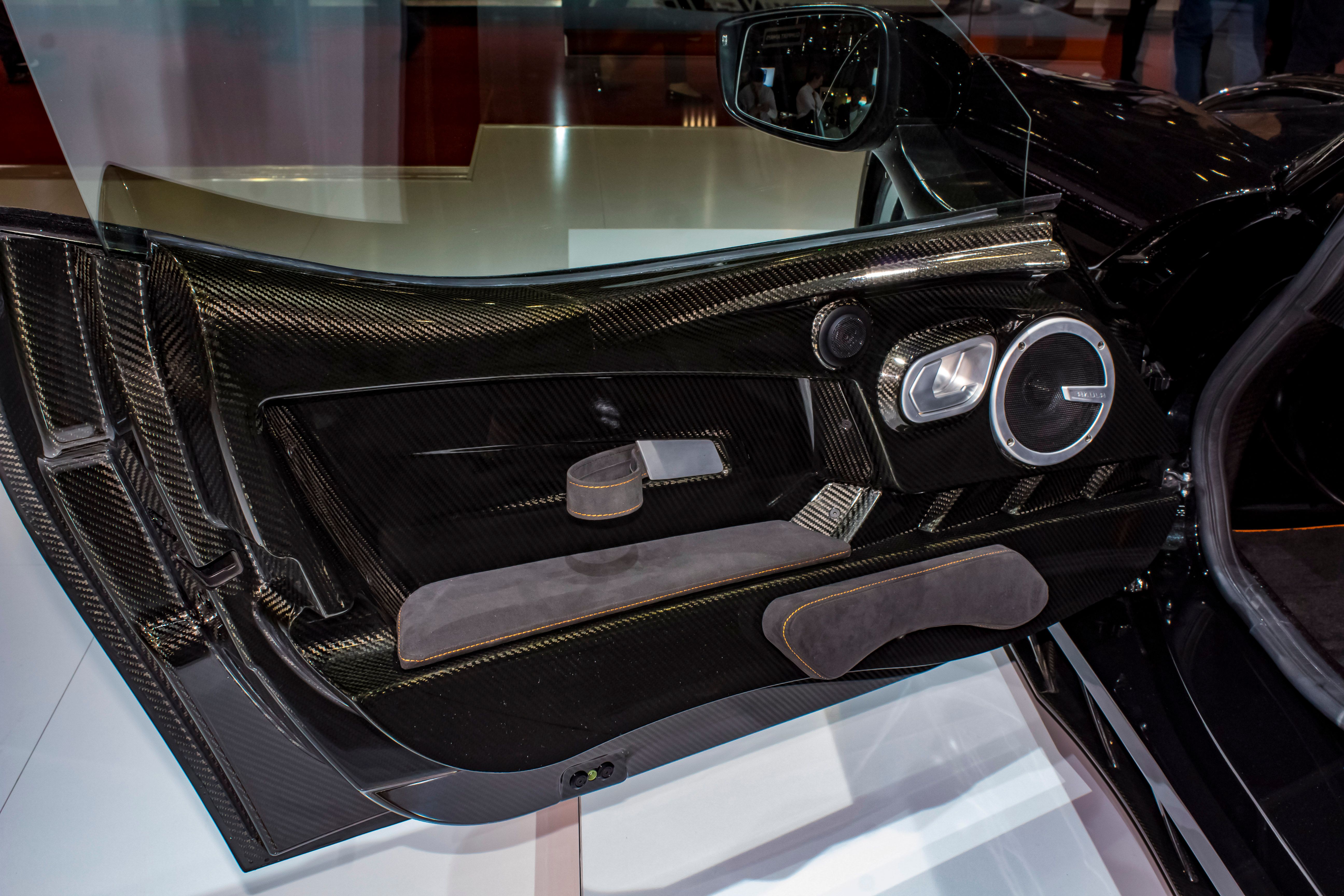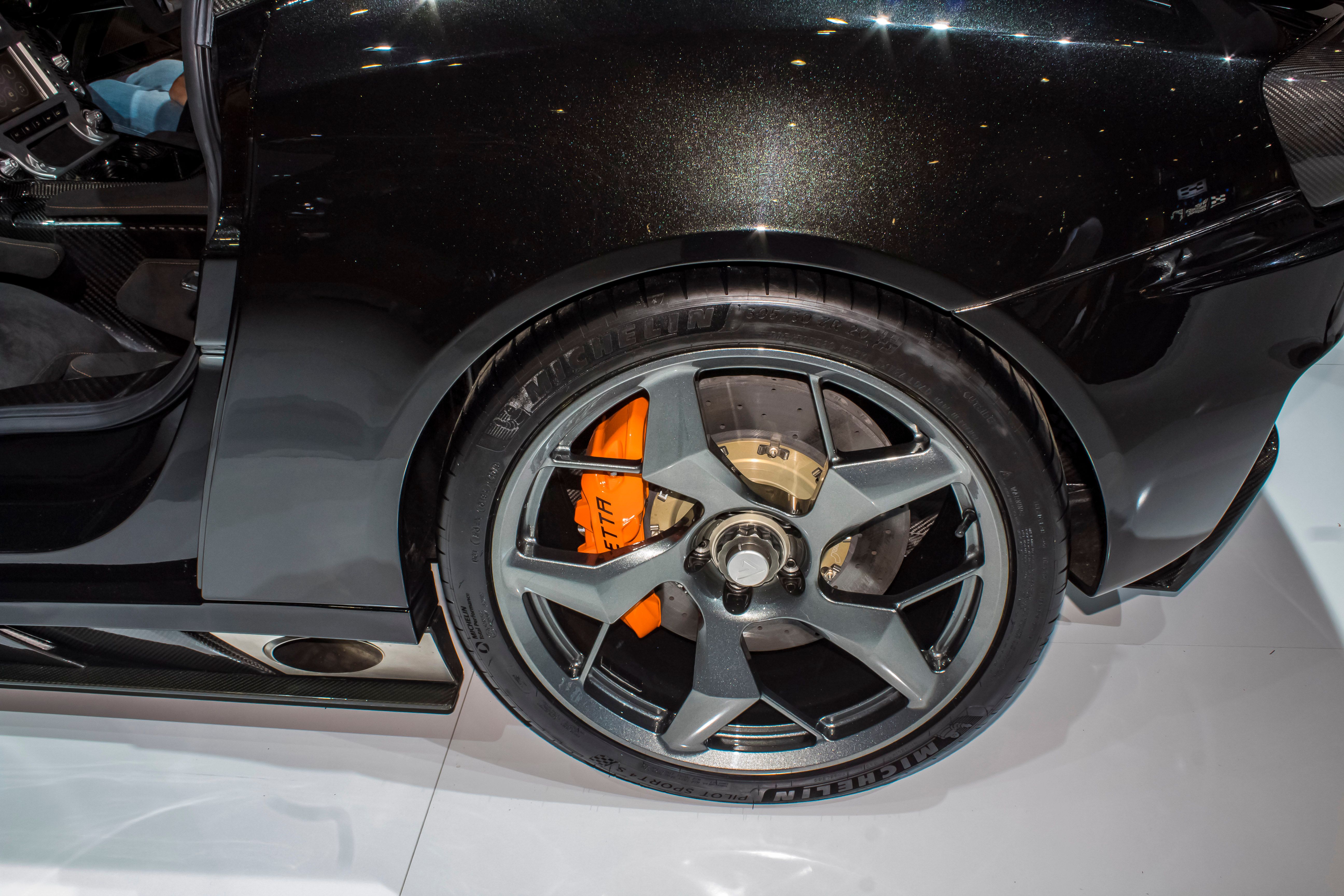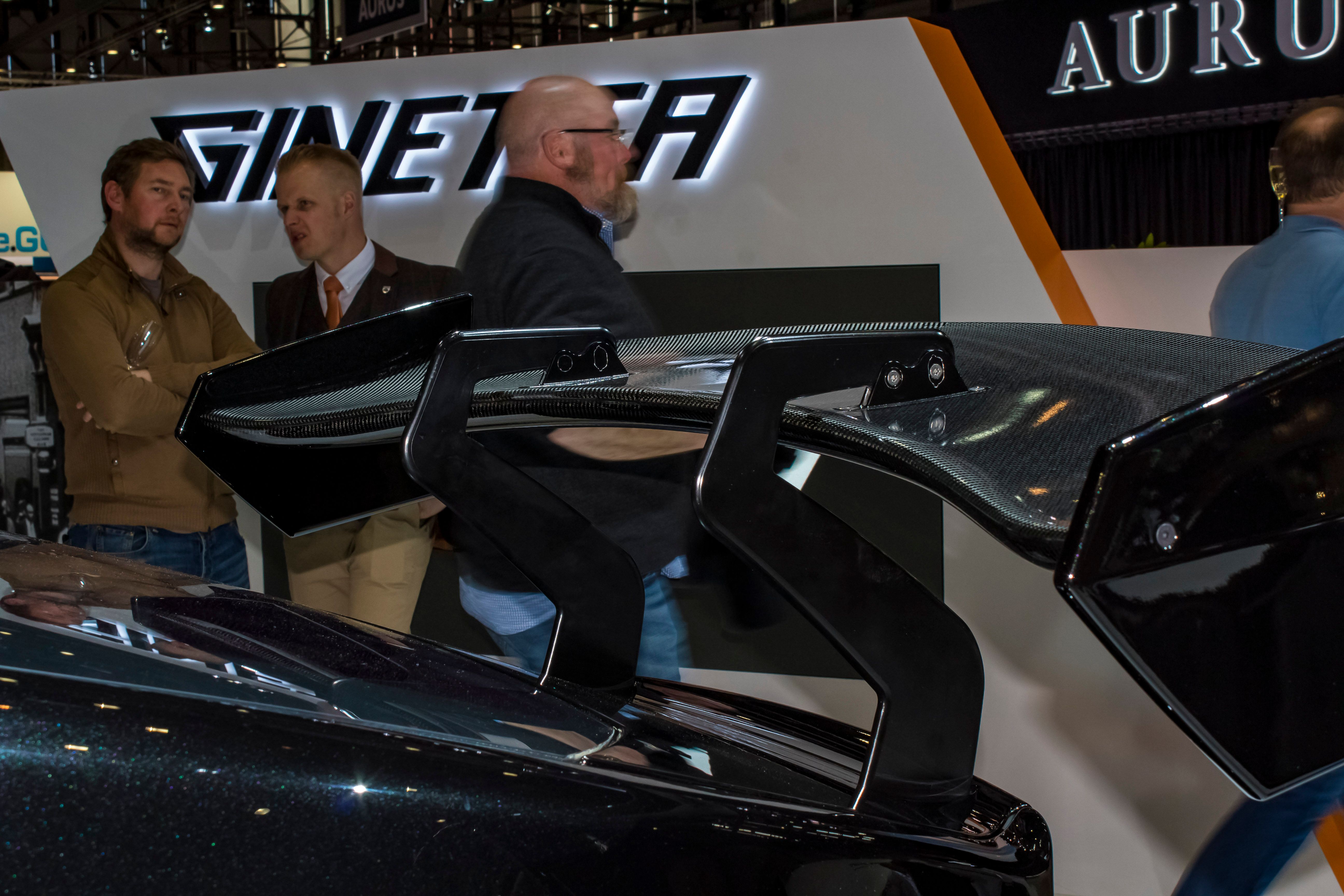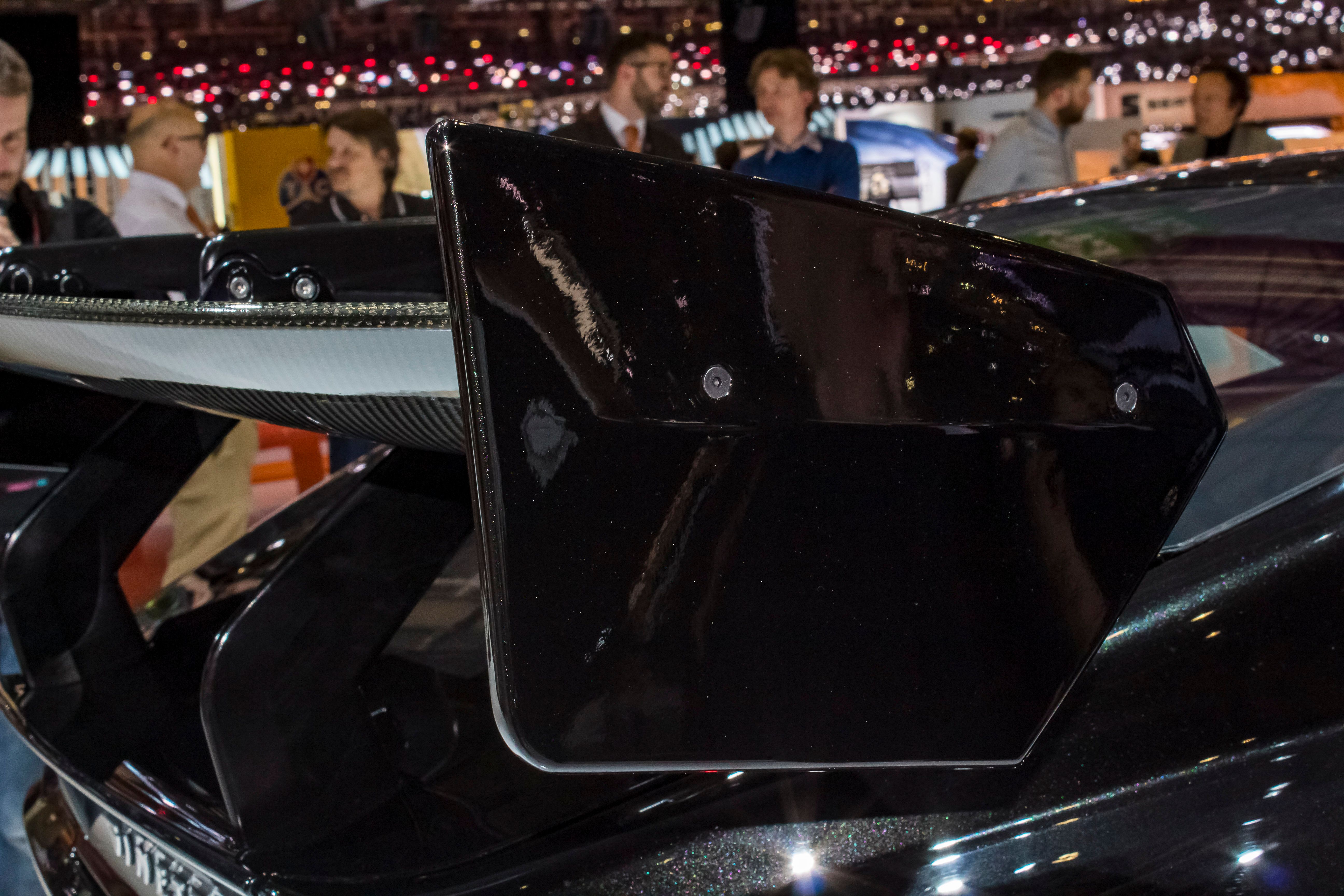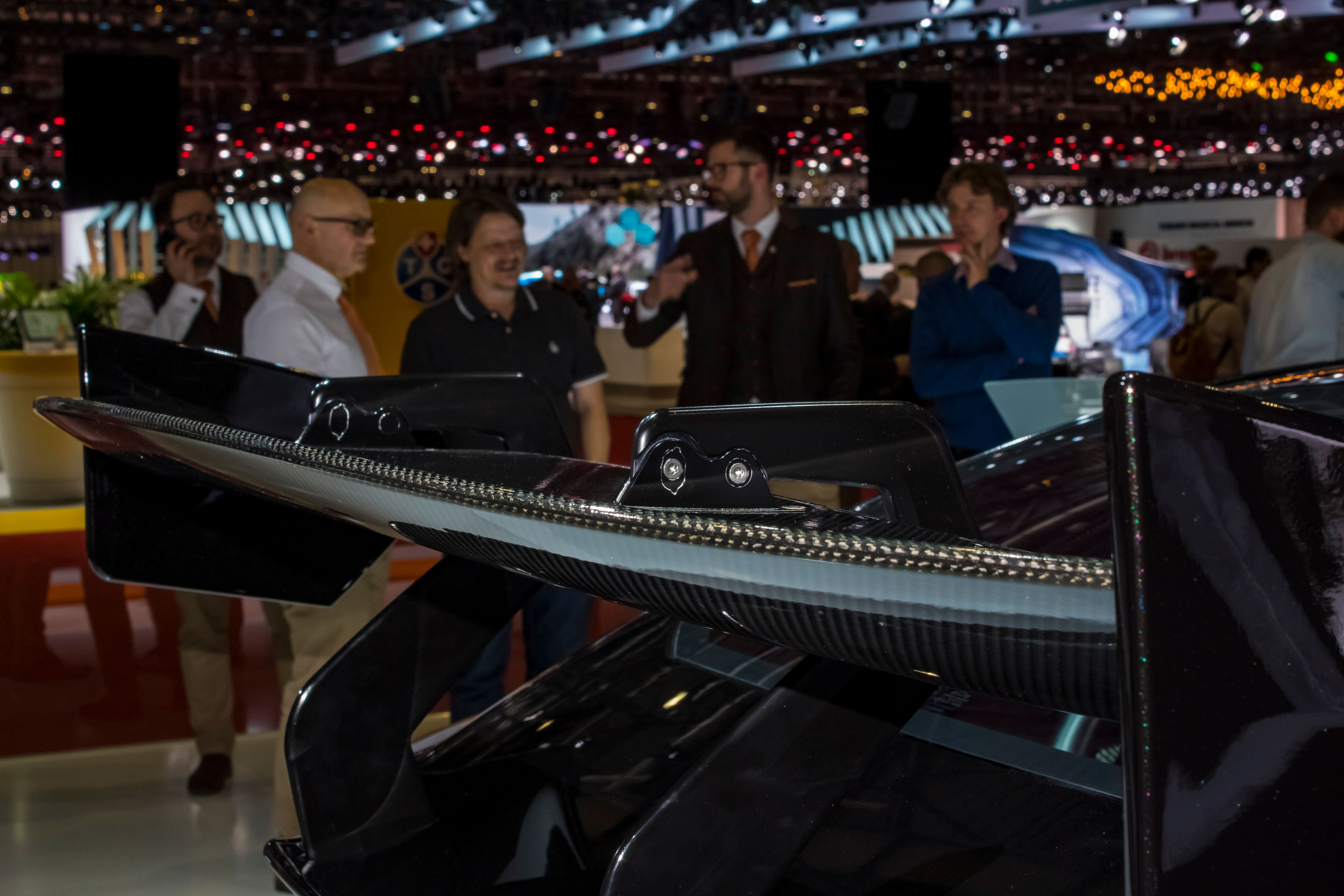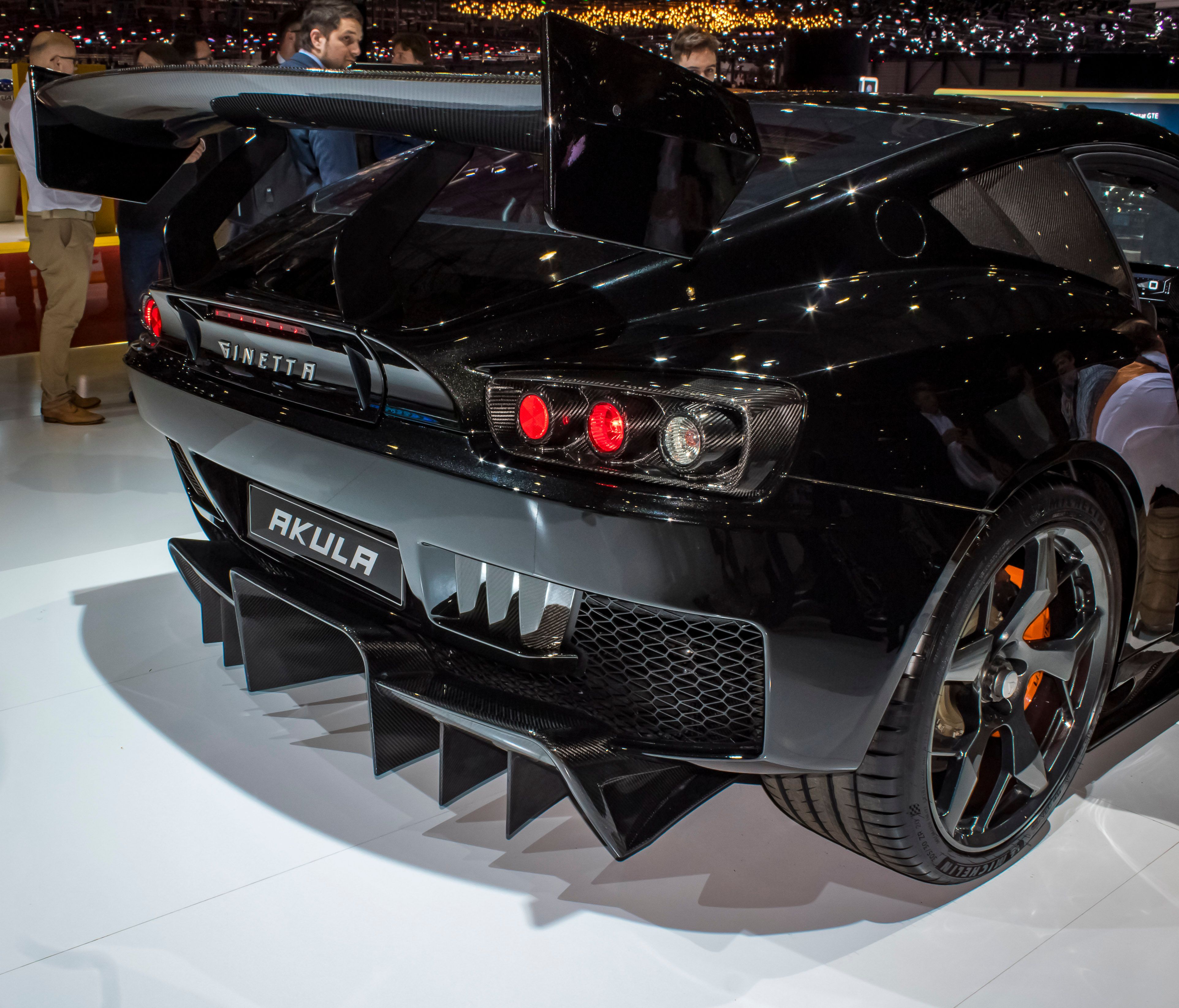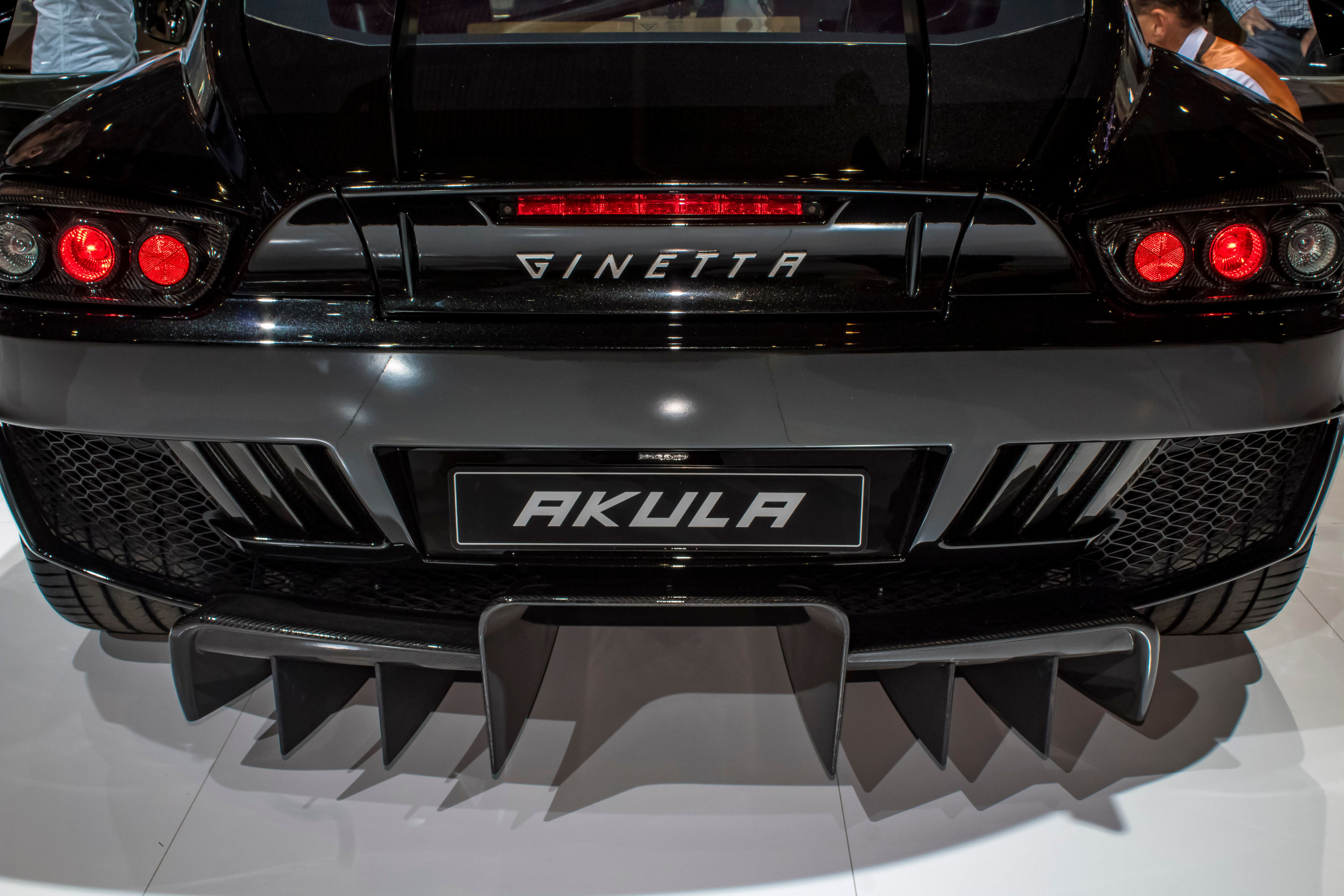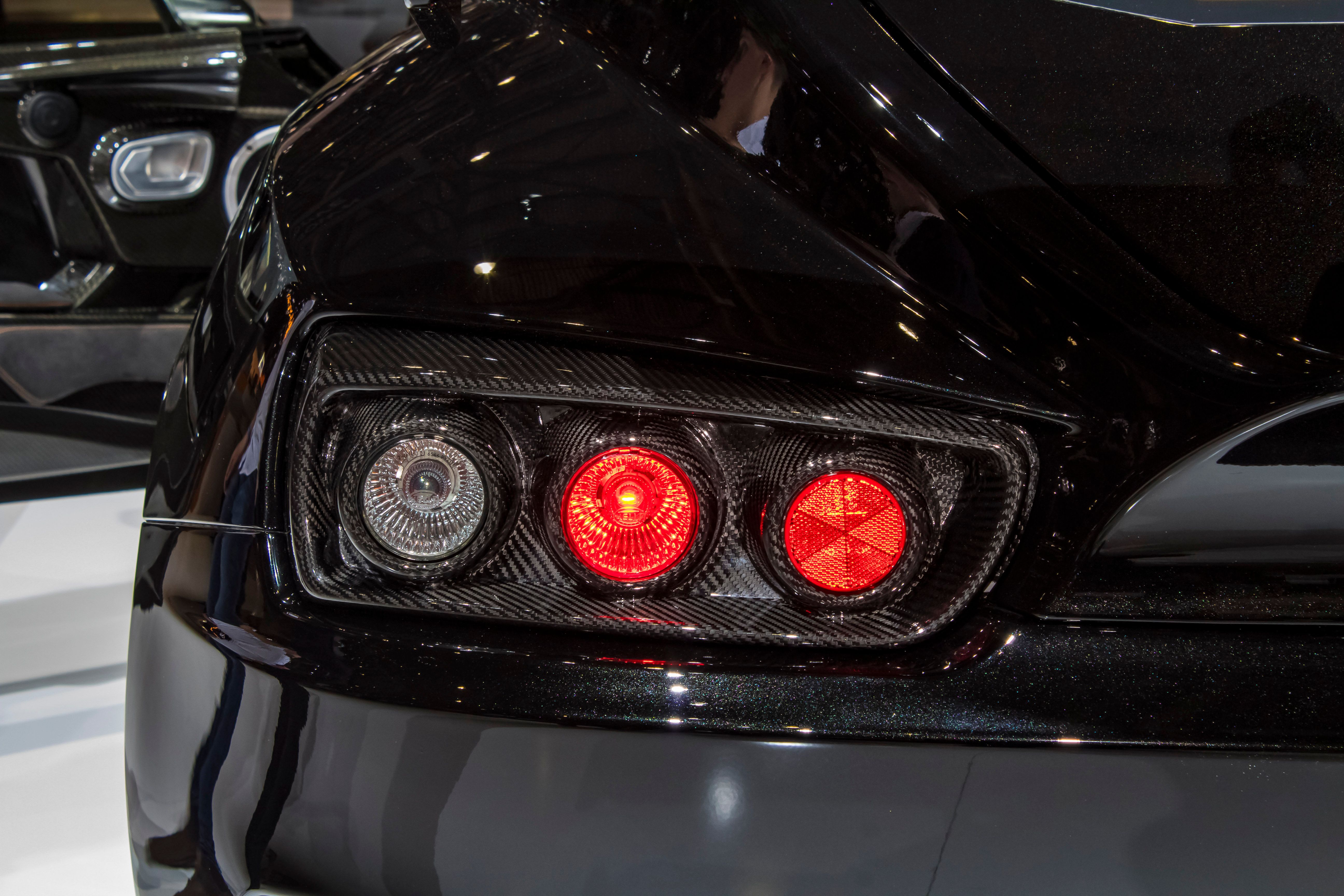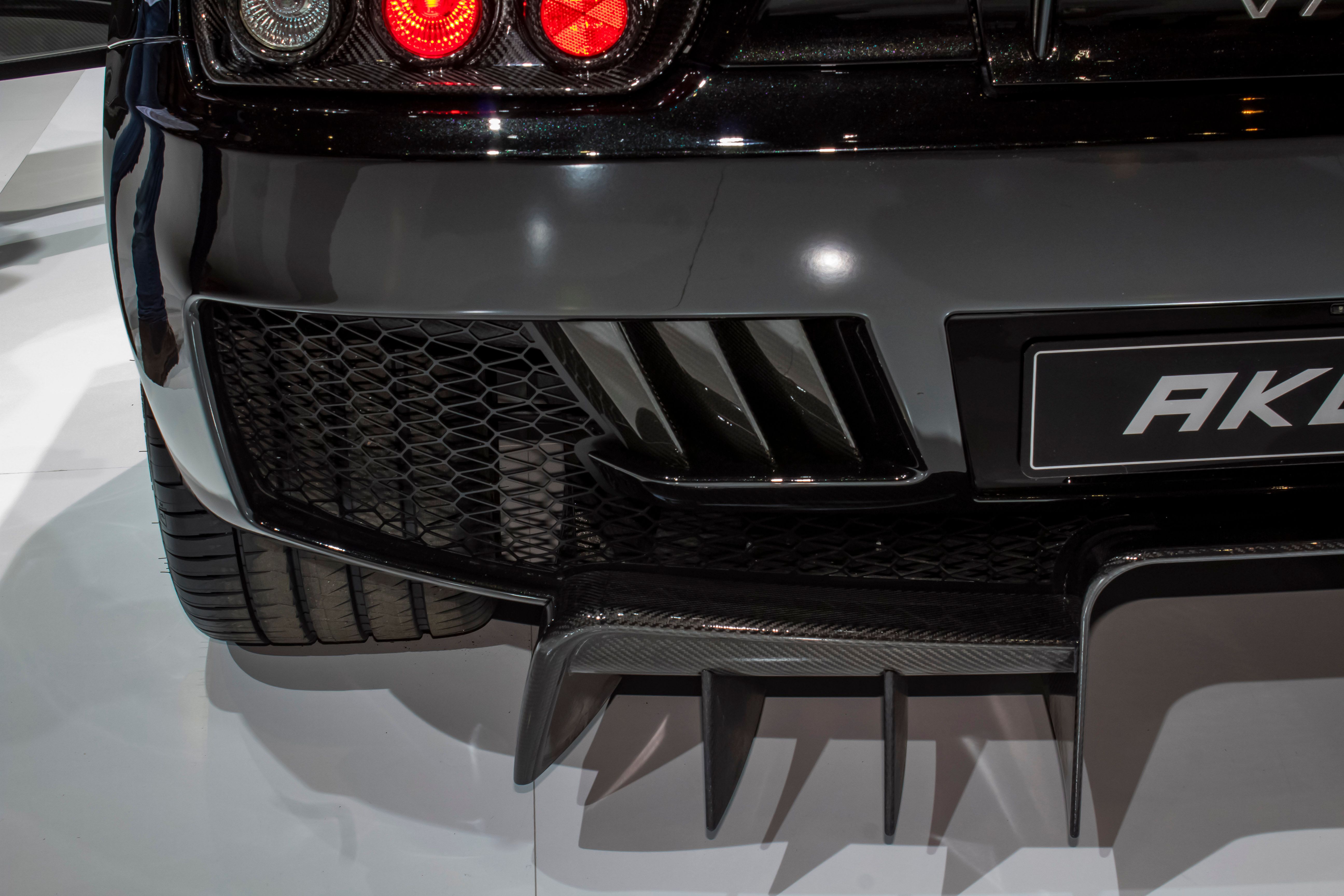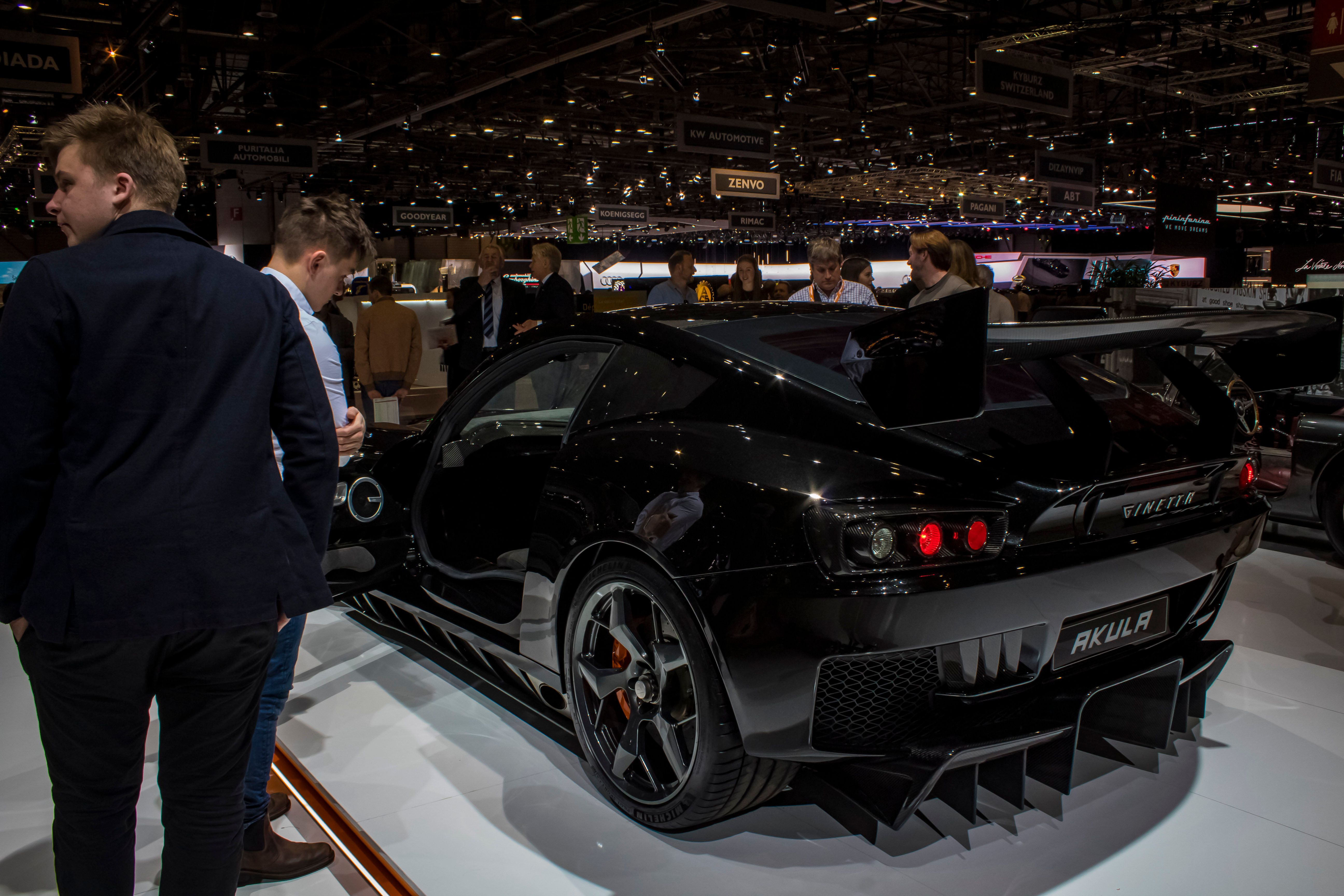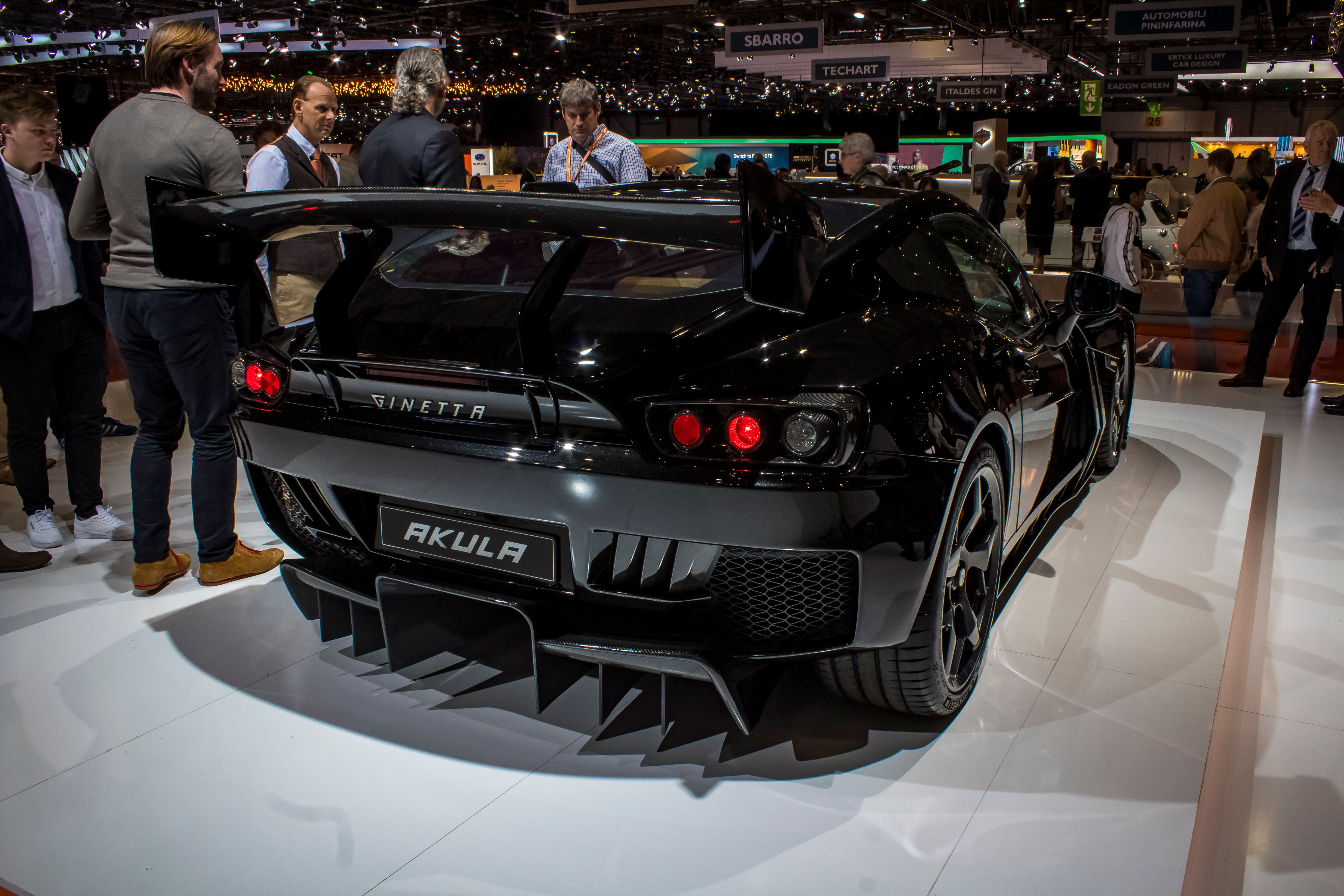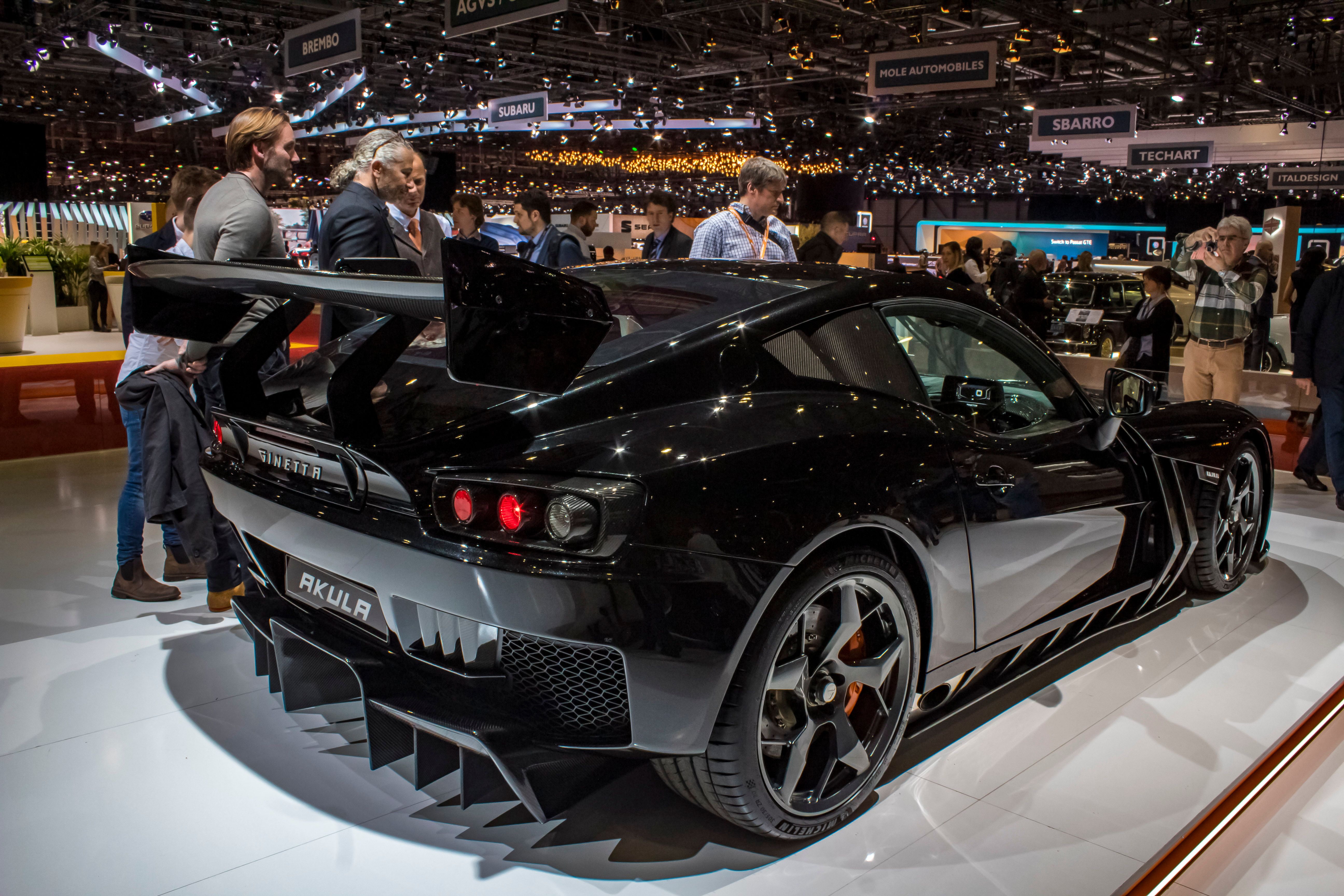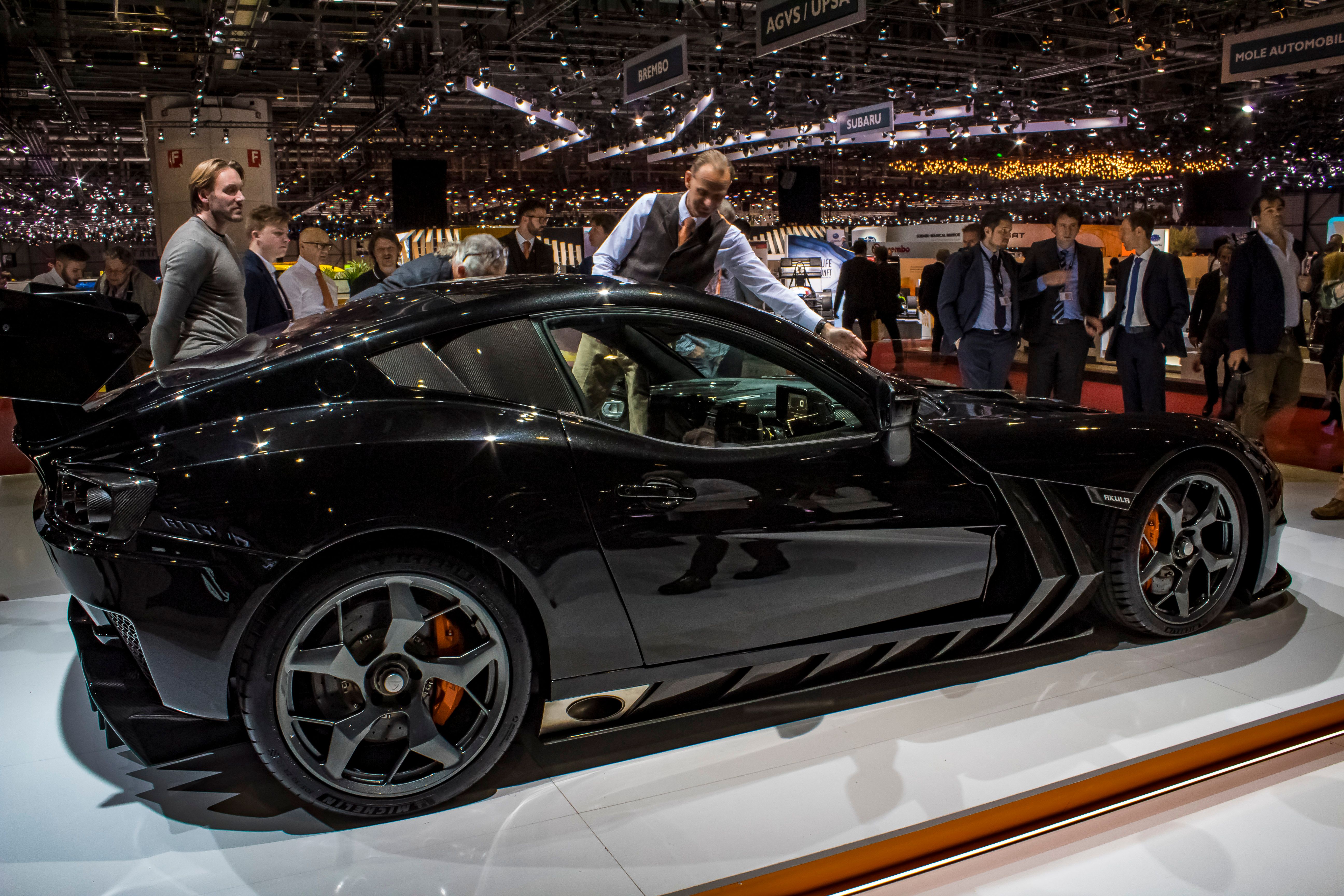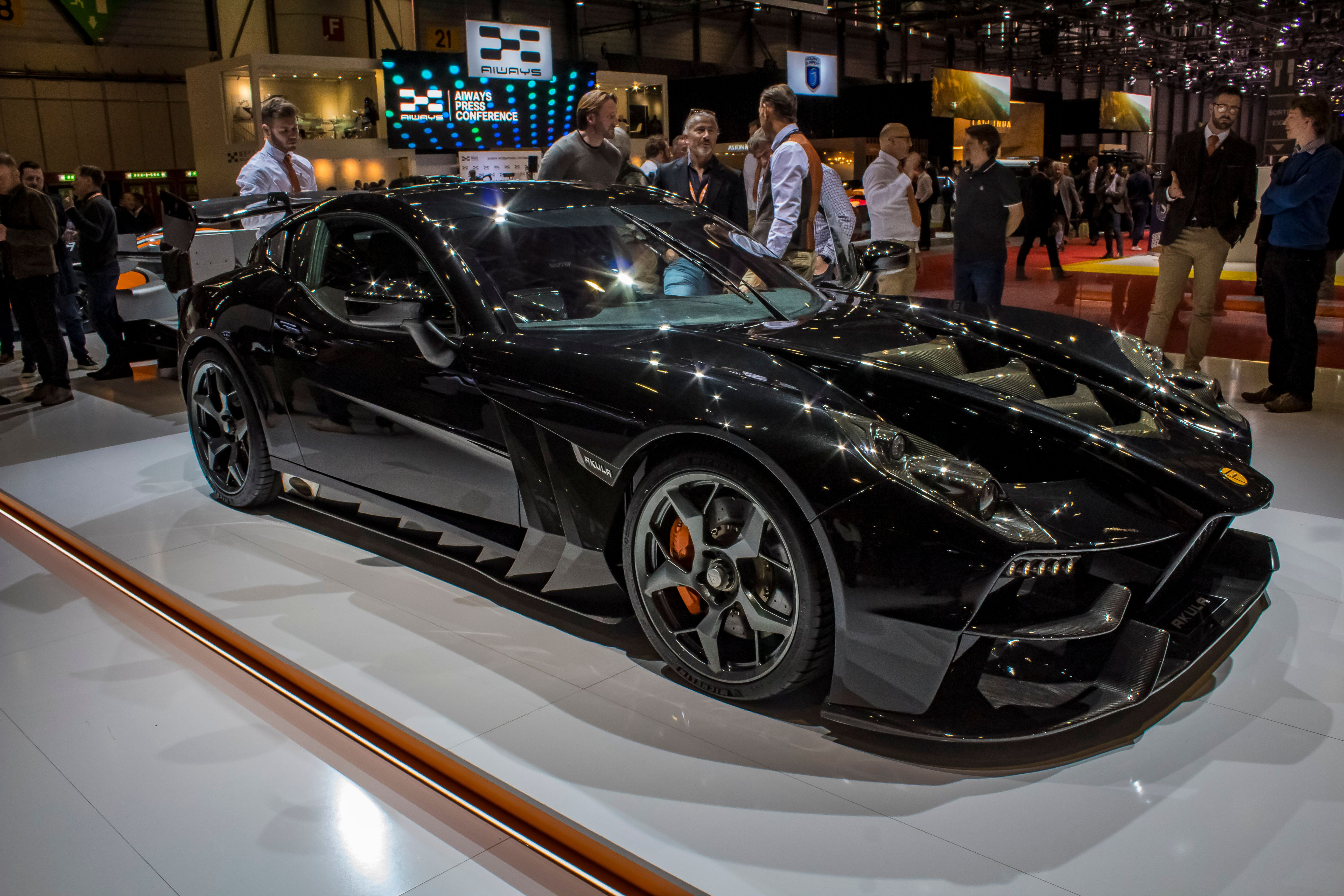British race- and sports-car builder Ginetta attended the 2019 Geneva Motor Show with its latest creation, the Akula. Named after the Russian word that translates to “shark,” the Akula looks every bit like an asphalt predator. The Akula combines an attention-grabbing design with a low-weight carbon-intensive construction and Le Mans-derived performance equipment. That’s an excellent formula for a niche model that’s looking to strike down the titans of its segment. Can the Ginetta Akula do it? We’re going to find out.
2020 Ginetta Akula
- Make: Array
- Model: 2020 Ginetta Akula
- Engine/Motor: V8
- Horsepower: 600
- Torque: 520
- [do not use] Vehicle Model: Array
2020 Ginetta Akula Exterior
What’s your first reaction when you see the Ginetta Akula? It looks like a supercar, but it doesn’t jump off the page, right? I’m not quite as sold on it as I want to be, partly because I’ve seen this kind of design before. There are some pretty elements, for sure. The front bumper and lip spoiler looks menacing.
The rear diffuser looks race-spec. But the taillights? The carbon fiber case of the circular lights is a nice touch, but the shape and layout of said lights aren’t. Let’s just say we’ve seen them before…from the 1995 Ferrari F355. The one design element that I’m most disturbed by is the Akula’s nose. It’s a flat nose that extends a little past the lip spoiler. In some angles, it looks decent. But on some angles, it looks like a bird’s beak. Sure, it’s a small detail that a lot of people can live with, but this goes back to my earlier point of a supercar looking aggressive enough to make people stop on their tracks, pull out their mobile phones, and take selfies with the car in the background. That’s the kind of reaction I’m looking for in a supercar. I don’t get that with the Ginetta Akula. I’ll stop and look at it, sure, but as far as taking photos of it, I’d rather save my phone’s battery.
To be clear, I’m not blaming Ginetta one bit. The Akula can be an acquired taste. There’s a chance I can warm up to it, especially if I see it in a different color. And for what it’s worth, Ginetta pulled out all the stops to make the Akula as light and as aerodynamically fierce as possible, even if it came at the cost of its aesthetics. I can respect that.
I respect Ginetta’s drive and purpose in developing the Akula. Clearly, the company has a rich history of developing some of the best LMP race cars in the world. A lot of that experience was used in the development of the Akula, and while I’m not a big fan of how it looks — it’s not a badly designed car; I’m just not blown away by it — I admire the lengths Ginetta talk in making the Akula an aerodynamic powerhouse. In many ways, that’s a good trade-off.
2020 Ginetta Akula Interior
Like most supercars, the Ginetta Akula has room for only two seats. Based on the images we took from the show, the leather-dressed seats look and, more importantly, feel mighty comfortable. That’s important when you’re driving a 600-horsepower supercar that can presumably hit close to 200 mph. The layout, particularly that of the dashboard, is clean, exactly how it should be. Nothing is excessive; the only notable piece of equipment is the Tesla-like digital display that sits diagonally on the center console. Apart from the two knobs on the tunnel, all the controls are accessed through the display. Carbon fiber panels cover a good amount of the interior surface. Those that aren’t are covered in leather. Fancy leather adorns the seats, steering wheel, and door panels while the door handles and inside switchgear, all come from milled billet aluminum.
Part of the Akula interior’s appeal is the amount of personalization that comes with the purchase of a model. According to Ginetta owner and former Le Mans class winner Lawrence Tomlinson, every owner of the Akula will receive, among other things, a race-style car fitting.
The Akula’s interior also offers ample space, which is surprising considering that the supercar features a front/mid-engine layout. The small Ginetta-designed V-8 engine sits so far back from the hood that its drive pulleys sit directly beneath the windscreen wipers. It’s not the traditional mid-engine setup that you normally see from other cars of its ilk, but Tomlinson says that this setup creates better weight-balance between the front and rear — the weight ratio is 49:51, which backs up his claim — of the Akula. It also provides enough space to accommodate a carbon fiber front structure that offers FIA GT3 levels of crash protection. It's remarkable, too, that the location of the engine didn't compromise the front legroom of the car.
Speaking of remarkable things about the Akula, it also comes with a spacious trunk. I’m not talking about spacious relative to other performance cars. I’m talking about spacious relative to all cars.
I’ve nothing negative to say about the Ginetta Akula’s interior. It looks clean, classy, and well-dressed. It’s highly customizable, too. Plus, it has the kind of rear cargo space you normally see on SUVs. What’s not to love with this kind of setup?
2020 Ginetta Akula Drivetrain
Ginetta didn’t divulge performance details, though it did say that the V-8, which is dry-sumped and fuelled by Ginetta's own throttle bodies, connects to a six-speed sequential paddle-shift transmission with a differential connected to the engine through a tailshaft made from, you guessed it, carbon fiber. The two rear wheels bear the brunt of the V-8’s fury, though, as I mentioned, performance details have yet to be announced.
Given the focus Ginetta placed on the Akula’s aerodynamics, it’s within reason to imagine that the supercar can sprint from 0 to 60 mph in less than three seconds. Having the engine so far back creates that optimal aero character. Same goes for the long front wishbones that are unimpeded by the V-8 engine. This setup helps keep the tires flat on the road when a driver starts building up speed. The Akula’s downforce is also something to behold.
A race-derived suspension setup with pushrod-activated double-wishbones at both ends provide the needed assistance to ensure the Akula drives and handles like a legitimate supercar. Ginetta's LMP race cars use the same setup, adding another race-inspired element to the Akula's performance makeup.
The supercar also boasts hydraulic power-assist steering. Mess up in the straight or in the corners and you can rely on a handful of electronic aides -- ABS and traction control -- to get you pointed in the right direction.
2020 Ginetta Akula Pricing
But there’s also a reason why the Akula costs as much as it does. It’s limited to only 20 units in its first year of production, and Ginetta is building all 20 units on its own. No outside help coming here, folks. Throw in the amount of personalization that goes into the development of each unit of the Akula and you can understand why Ginetta is asking that much for one of its models. There’s a cost to these things.
In the event that you’re interested in buying a Ginetta Akula, you need to act fast. Company owner Lawrence Tomlinson has said that of the 20 units his company plans to build this year, 14 are already spoken for. That leaves six units that are still up for grabs. Time to give your bank’s loan officer a call, perhaps?
Production of the Akula starts later this year. Without any scheduling hiccups, the first deliveries are expected to start sometime around January 2020. If the supercar turns out to be a sales hit, Ginetta will build anywhere from 30 to 50 units per year.
2020 Ginetta Akula Competition
Lamborghini Huracan Evo
Technically speaking, the Lamborghini Huracan Evo is described as a new-generation model by Lamborghini. But it can also be described as a mid-cycle facelift of Lambo’s entry-level supercar. We’re not going to get caught up in the semantics because, however you want to describe it, the Huracan Evo is a pure Lamborghini. It’s based on the higher-spec Huracan Performante. It features typical Lamborghini-Like aggressive details in the front and rear sections. Bespoke wheels? Sure, it has them, too. There’s a big touchscreen in the interior, as well. The Huracan Evo’s call-to-fame, though, is the all-too-familiar 5.2-liter V-10 engine that has powered plenty of Lamborghinis in the past, including the Huracan Evo’s “predecessor,” the Hurcan LP 610-4. Naturally, the Huracan Evo’s V-10 unit packs more power: 631 horsepower and 443 pound-feet of torque. That’s more than what the Ginetta Akula’s naturally aspirated V-8 engine is capable of spitting out, but remember, the Huracan Evo tips the scales at 3,135 pounds. That’s 600 pounds heavier than the Akula.
Given that it wouldn’t be a shock to the senses if the limited-run Akula beats the Huracan Evo’s 0-to-60-mph acceleration time of 2.9 seconds. Perhaps the Akula can go even toe-to-toe with the Huracan Evo’s 202-mph top speed? Fortunately for those who are leaning towards the Lambo, the Huracan Evo starts at “just” $261,274, not counting tax fees.
Read our full review on the 2019 Lamborghini Huracan Evo
McLaren 720S
It only seems like yesterday when McLaren pulled the covers off of the 720S. But that happened two years ago, and since then, the 720S has established a reputation as one of the première supercars of its segment. It’s hard to find a more complete supercar than the 720S. It’s subjective, I know, but I find the 720S the most exotic-looking of all the supercars in its segment. That’s not all. It’s also the most advanced, at least if you consider state-of-the-art technology a part of that equation. The 720S also boasts a rotating instrument cluster, leather and Alcantara interior options, and visible carbon-fiber inside and out. Power? The 720S tops that list, too, thanks to a twin-turbo, 4.0-liter V-8 that produces 710 horsepower and 568 pound-feet of twist. The sprint to 62 mph takes 2.8 seconds, a tenth-second quicker than the Huracan Evo. Presumably, that’s faster than the Ginetta Akula, as well, but without a proper time from Ginetta, we’ll only find that out in an empty space of road. The Akula better come prepared, too, because the 720S is capable of hitting a top speed of 212 mph. For everything that McLaren is offering, the 720S fetches a starting price of $290,000. That’s before options turn that price tag bloody.
Read our full review on the 2018 McLaren 720S
Final Thoughts
The Ginetta Akula is the perfect example of a supercar that embodies what its maker wants out of it. Ginetta is far from a household name in these circles, but it has a reputation of building and developing some of the finest championship-winning LMP race cars in the world. It’s dabbled in the sports car segment every so often since its inception in 1958 but doesn’t have the same sparkling portfolio as the Ferraris, Lamborghinis, and McLarens of the world. Still, the company has built some firecrackers in the past. The Akula represents the most recent of the lot, and it’s an impressive piece of machinery. I’m not as sold on its looks as I want to be, but I understand those who think that it’s a design champion. Different strokes for different folks, I guess. That said, I’m a fan of everything else that Ginetta did to its new exotic. From the compact V-8 engine that produces supercar-levels of power to the carbon fiber tub that forms the bones of the exotic, the Akula is as impressive a boutique supercar as I’ve seen in quite some time. It’s not cheap, but I won't hold it against you if you end up buying one.
Further Reading
Ginetta’s All-New Lightweight Supercar Heads To Geneva With More Than 600 Horsepower
Read our full review on the 2016 Ginetta G57 Prototype Racer.
Read our full review on the 2015 Ginetta-Juno LMP Track Car.
Read our full review on the Ginetta G60.

